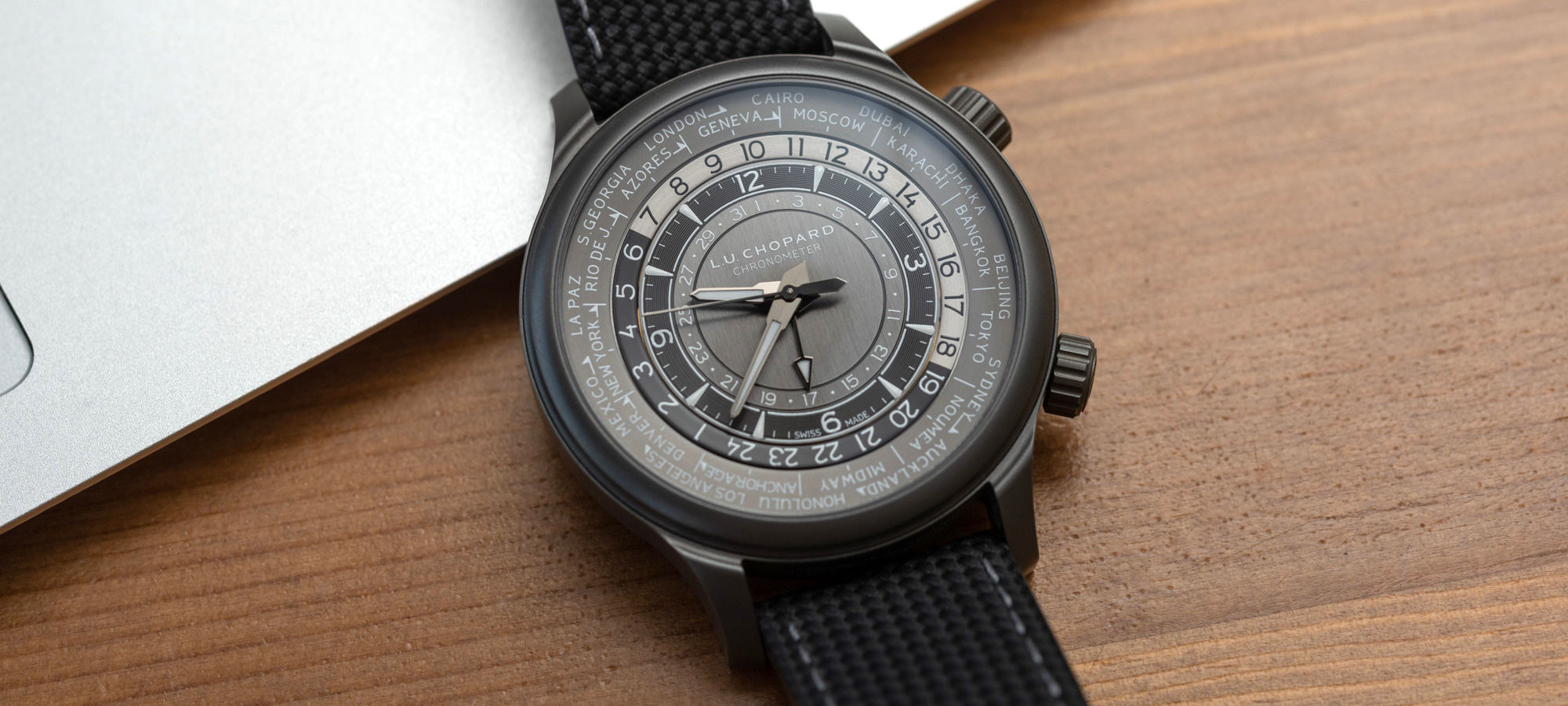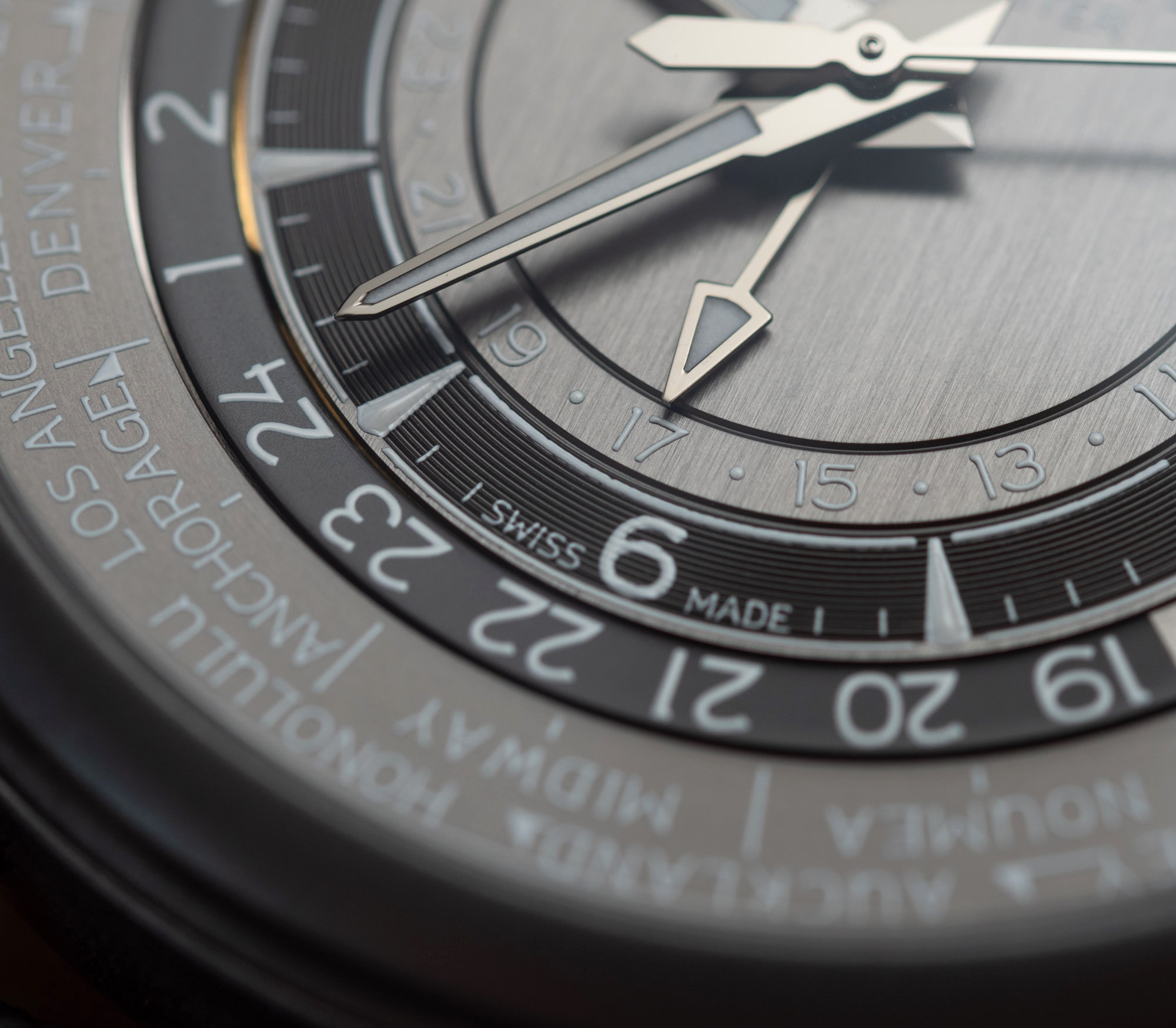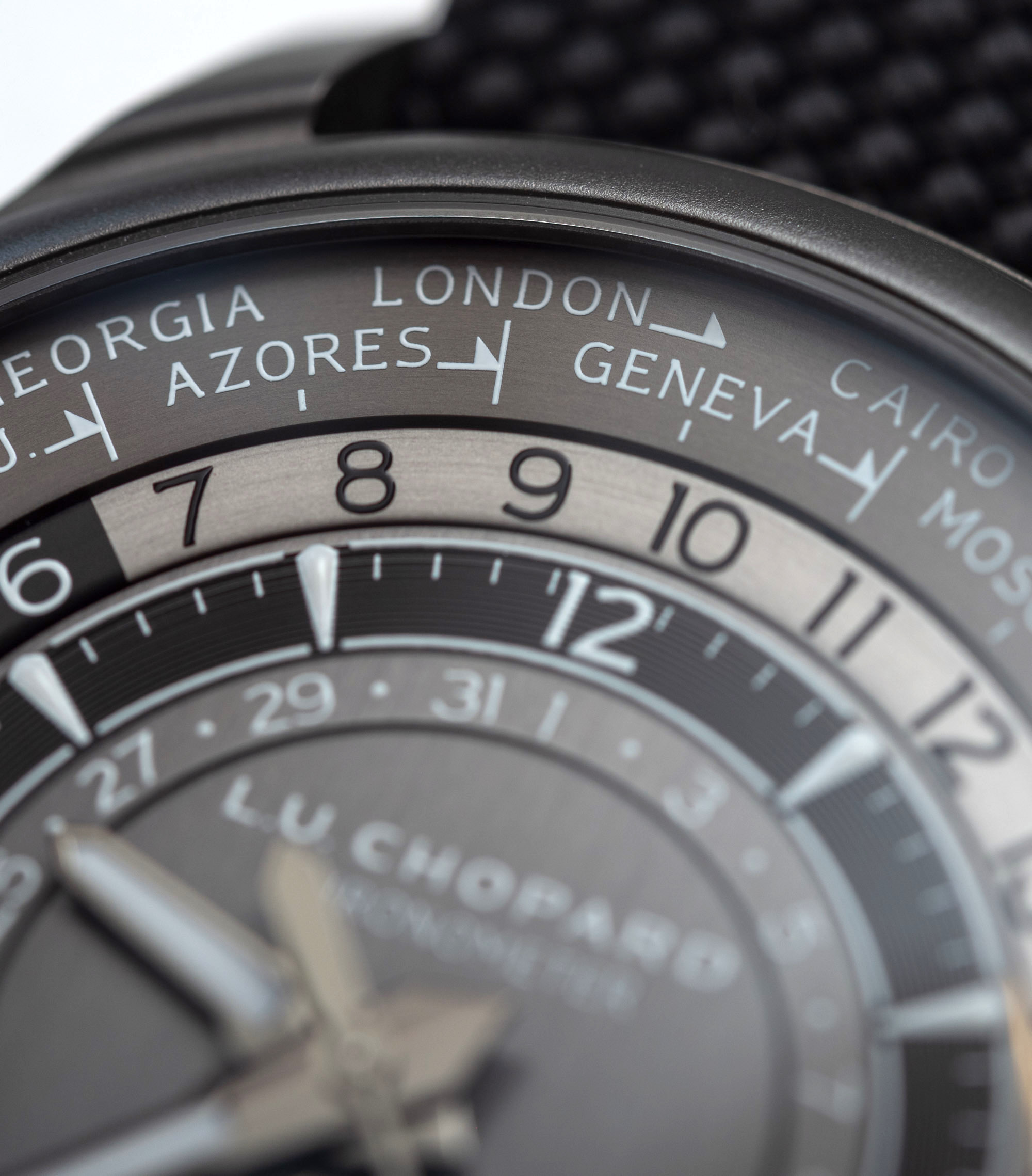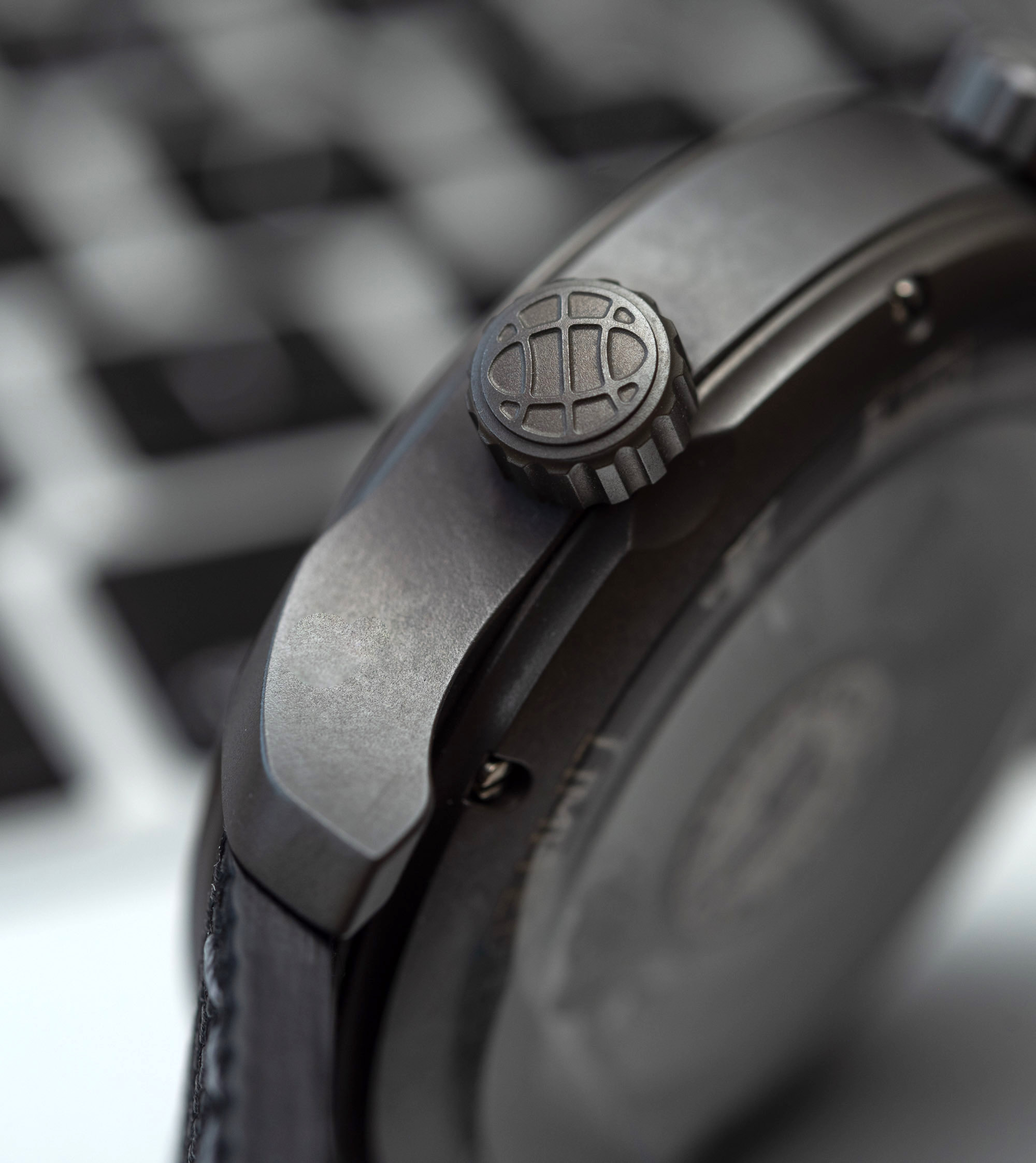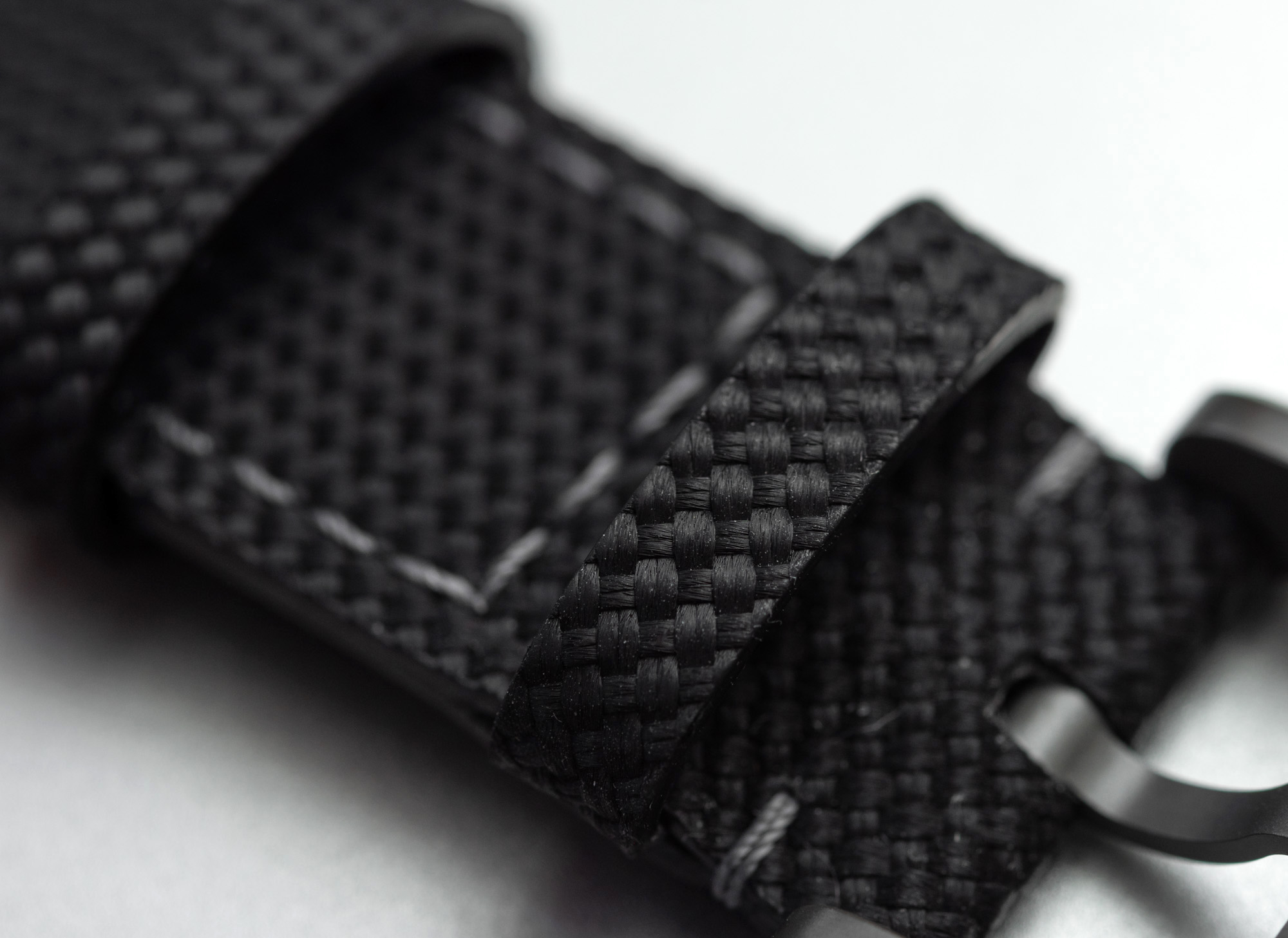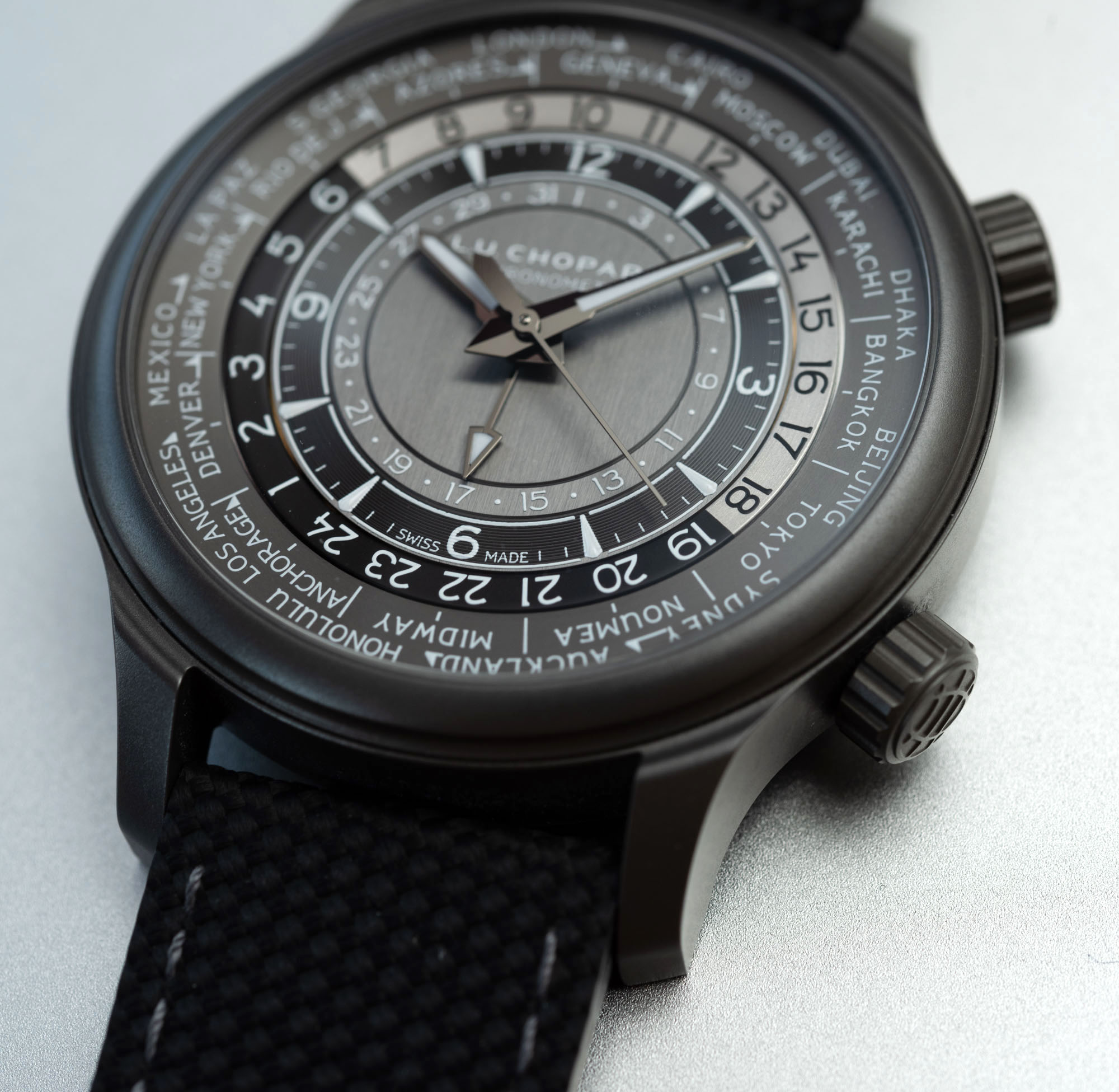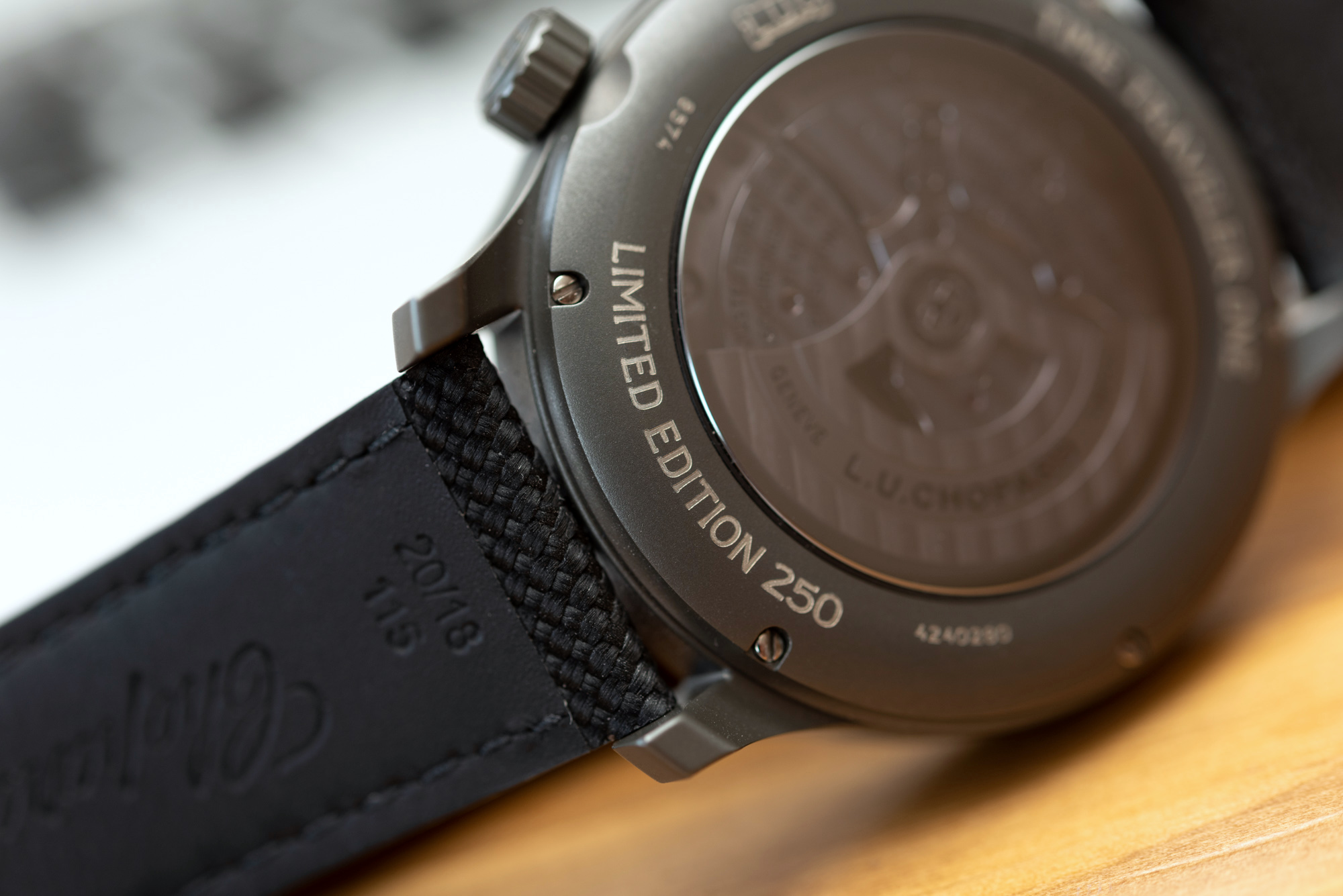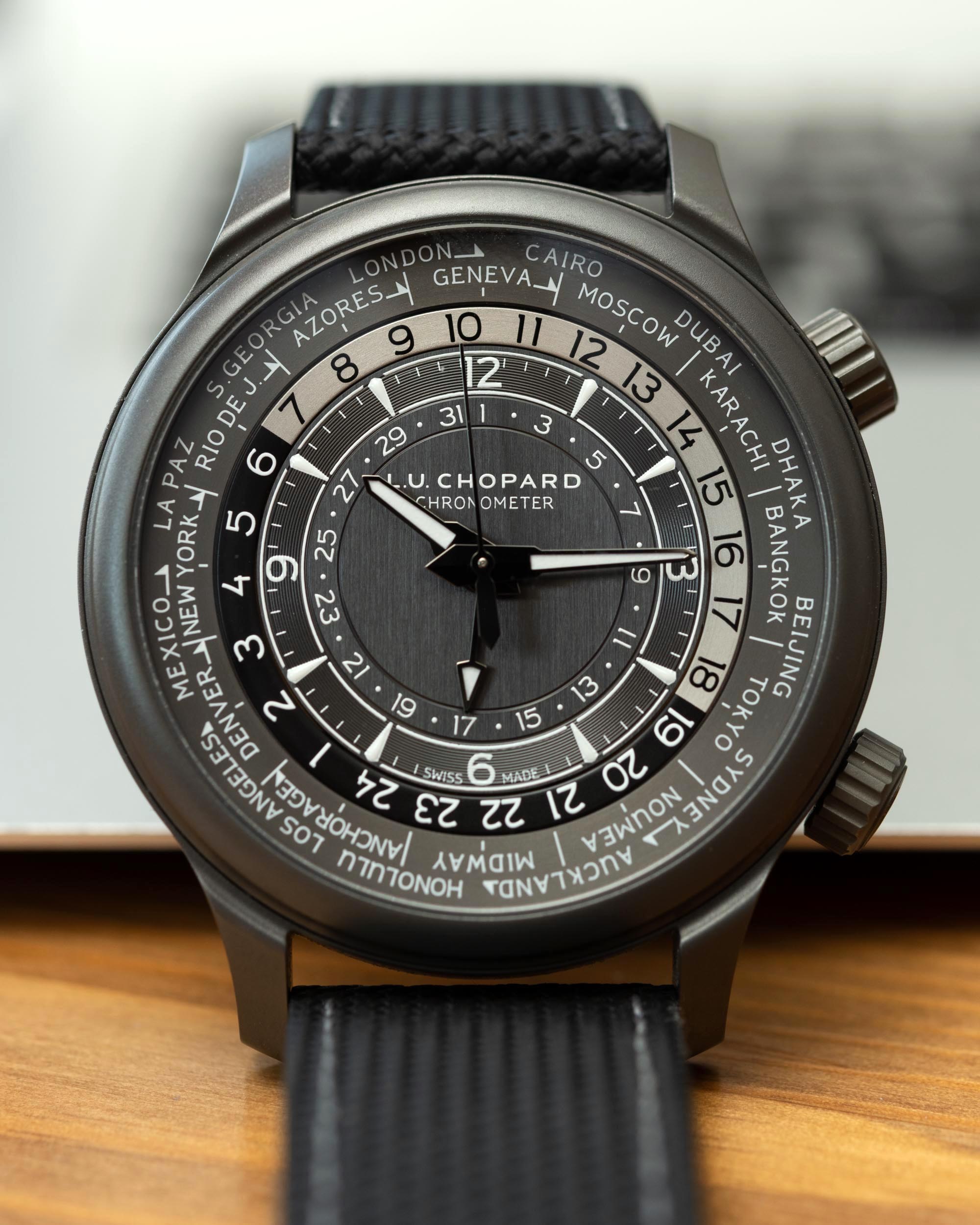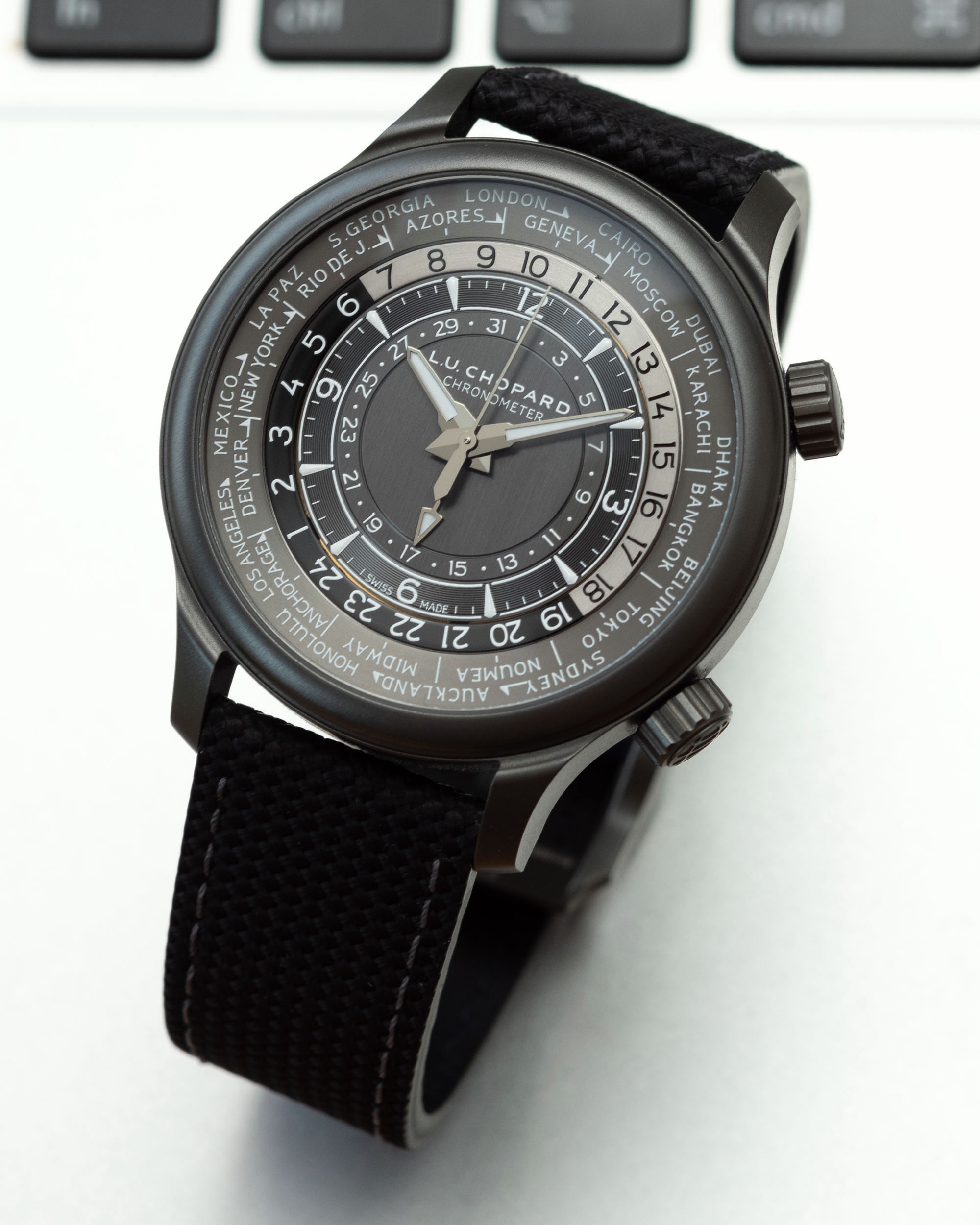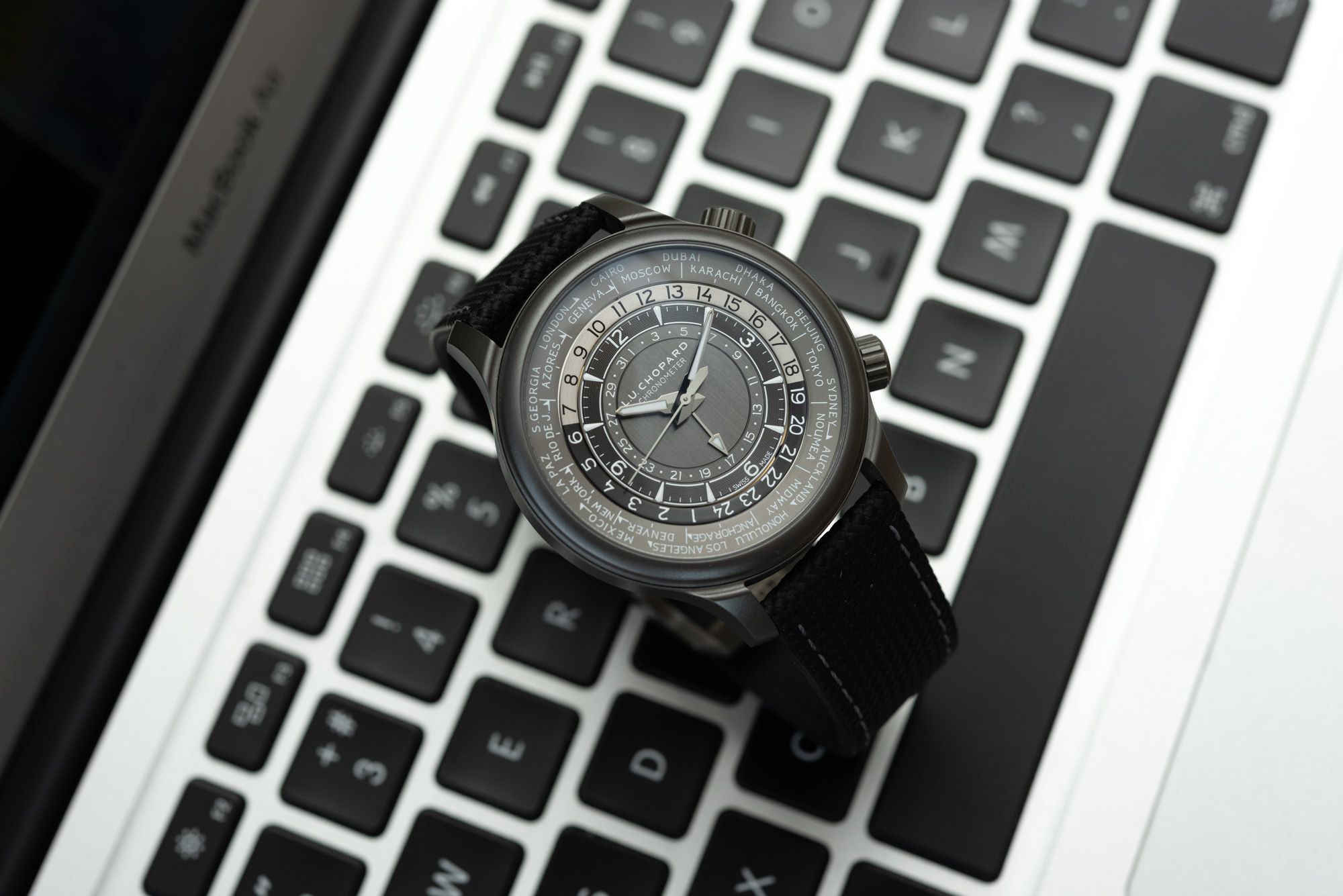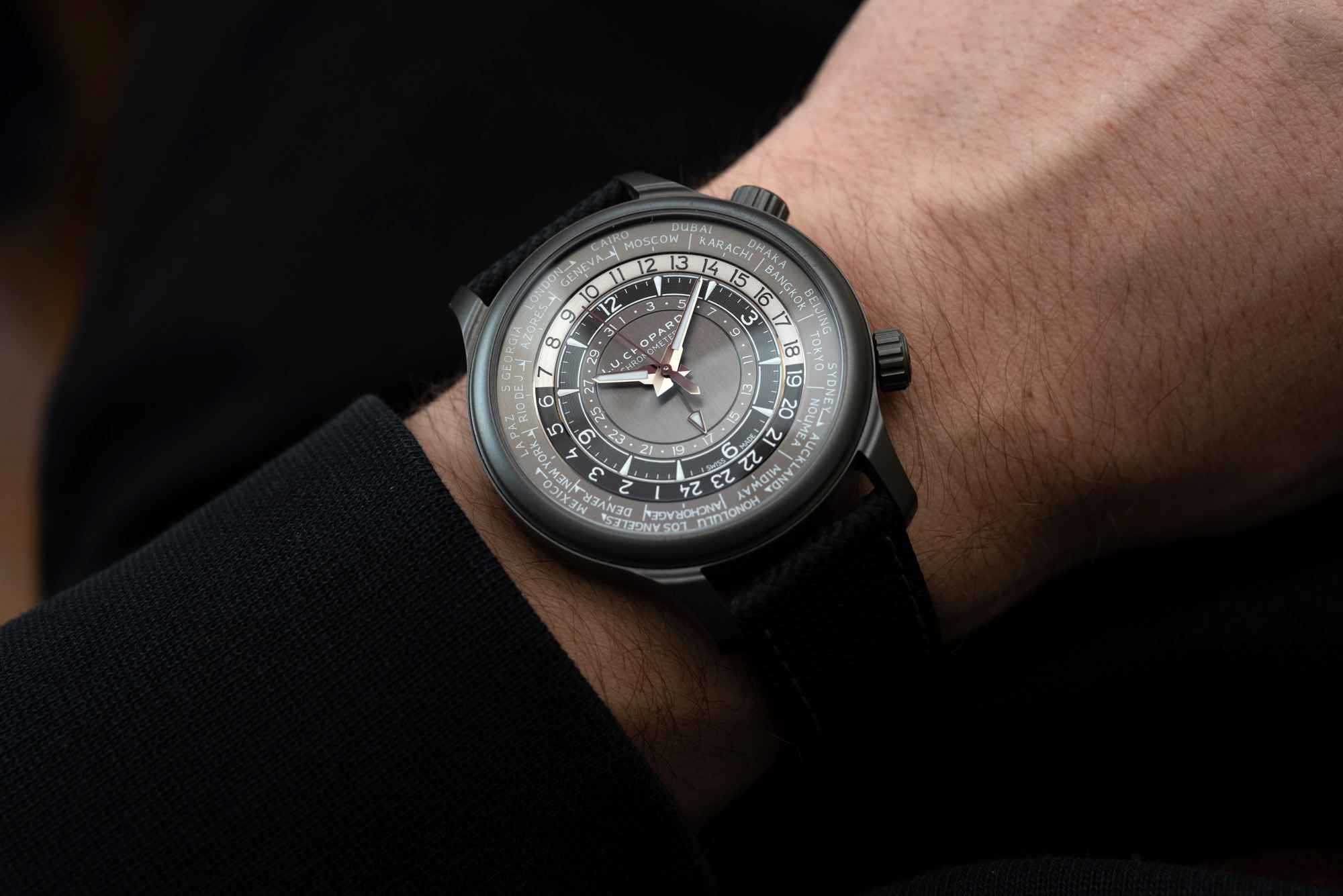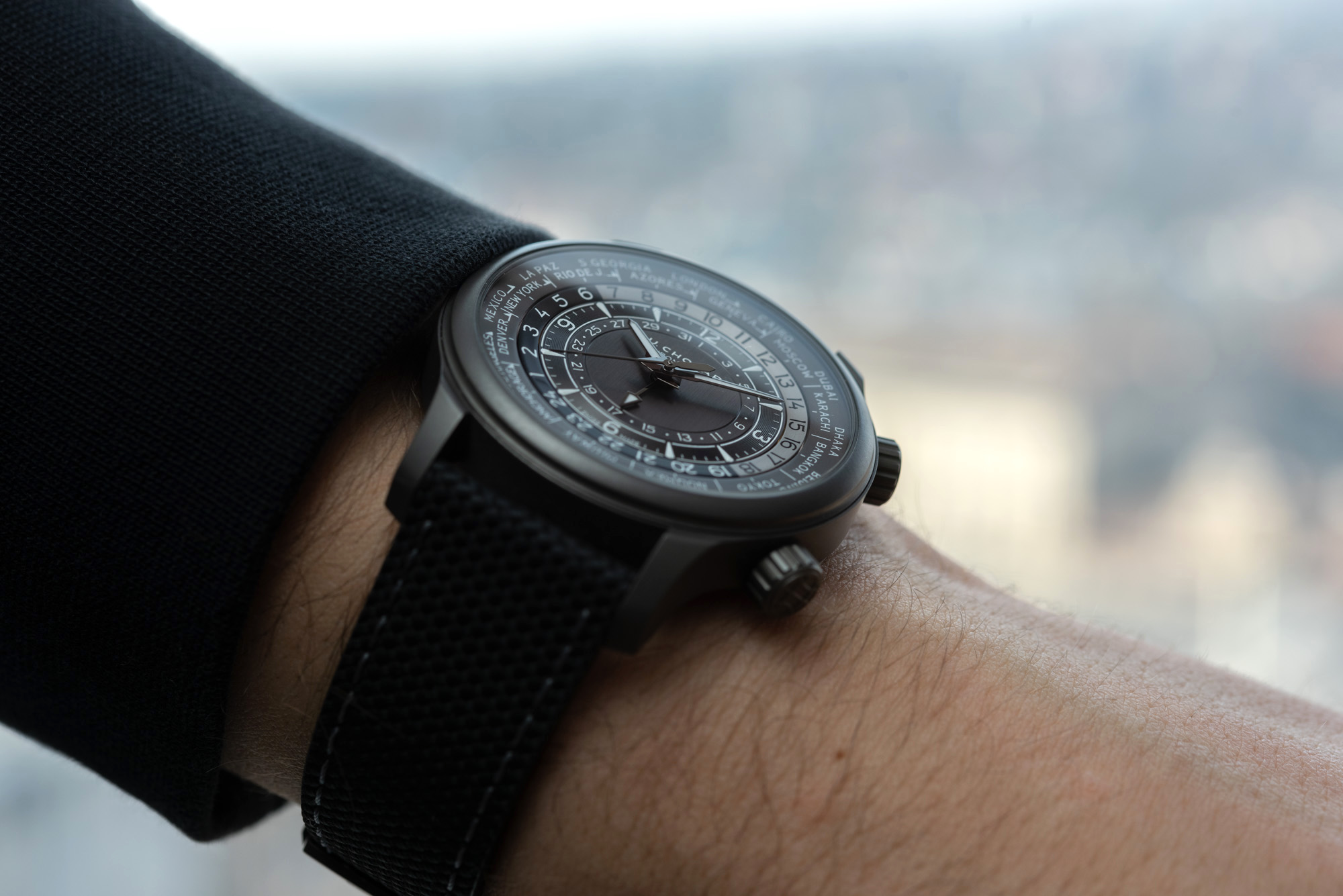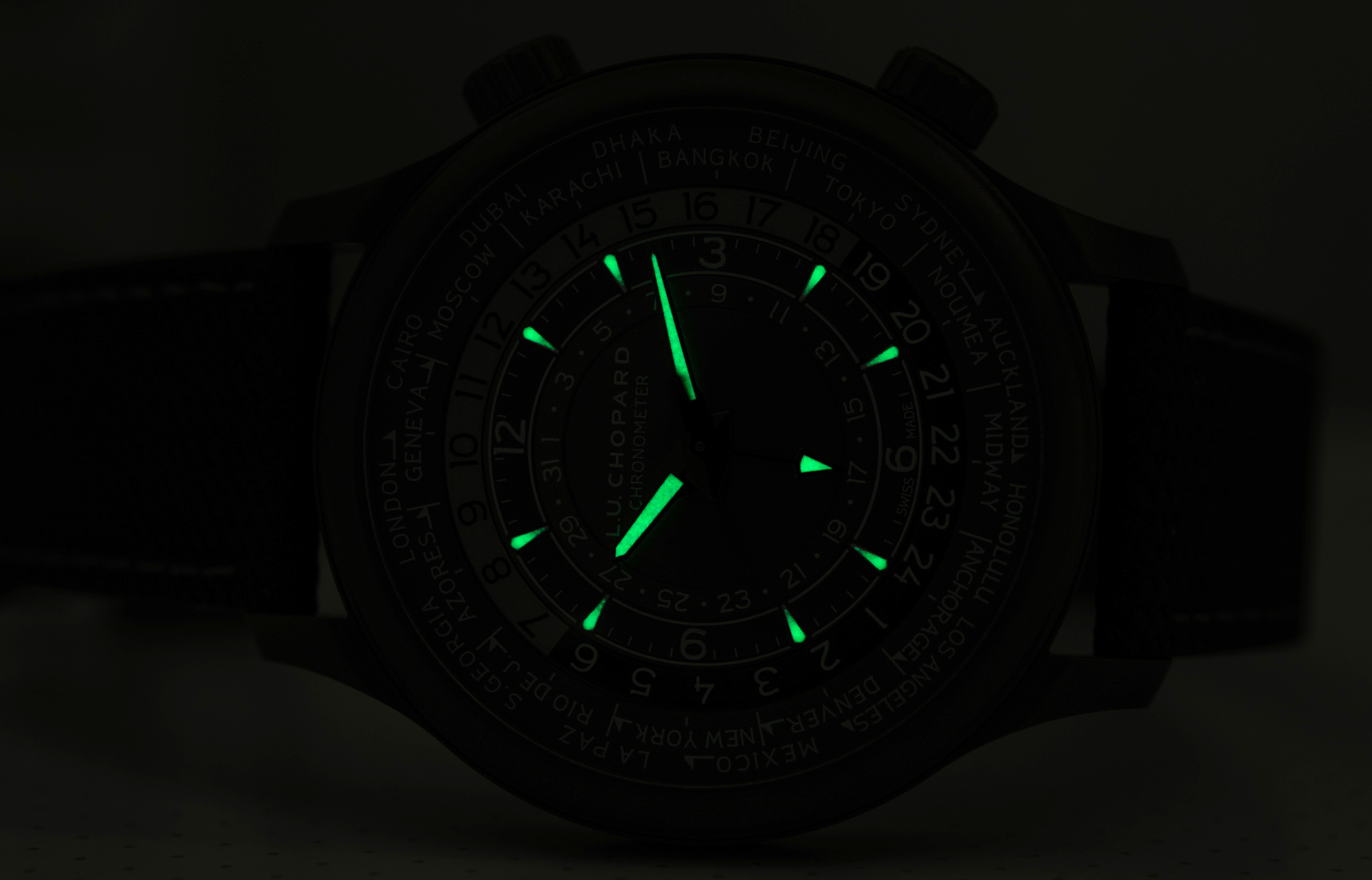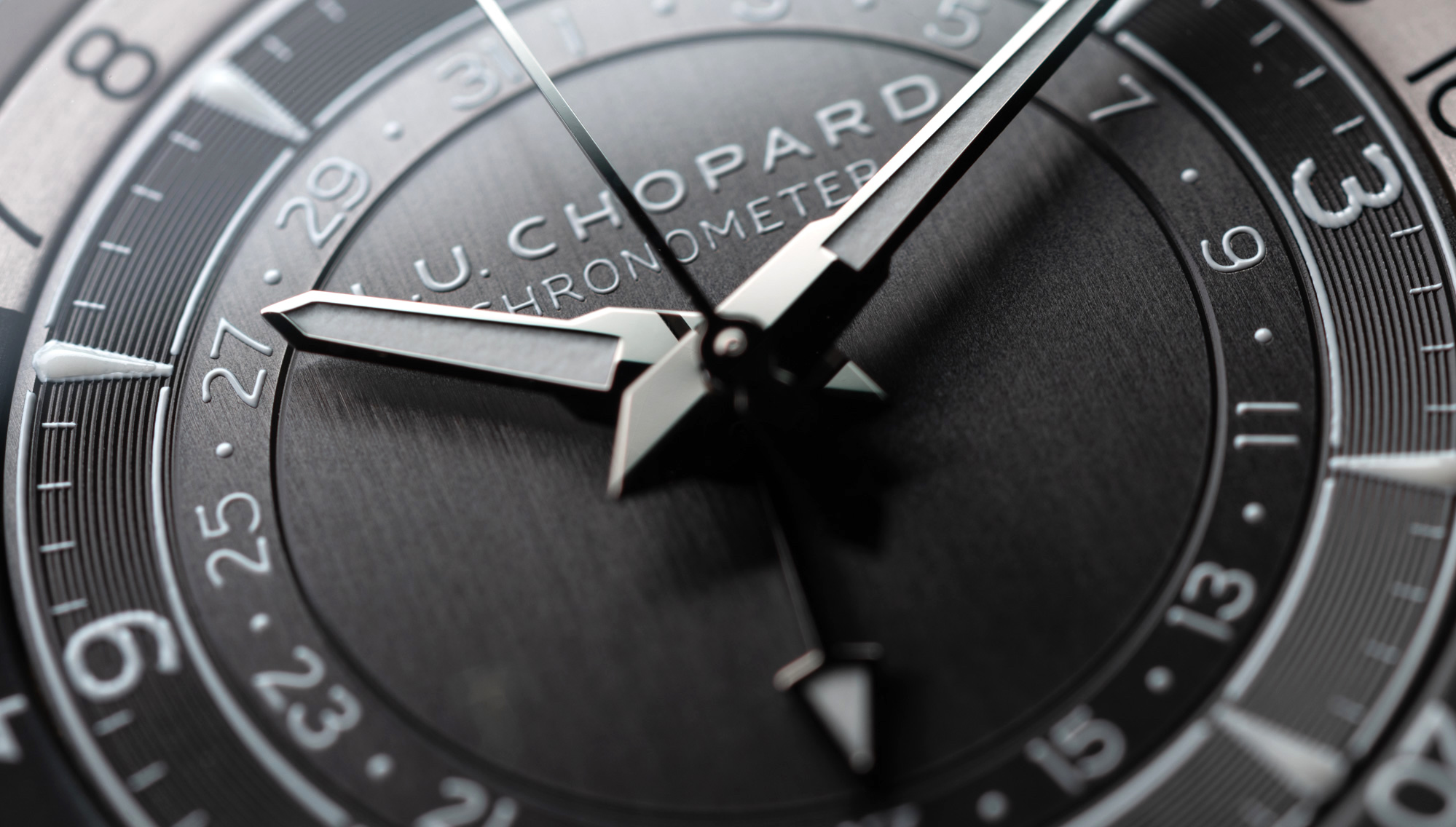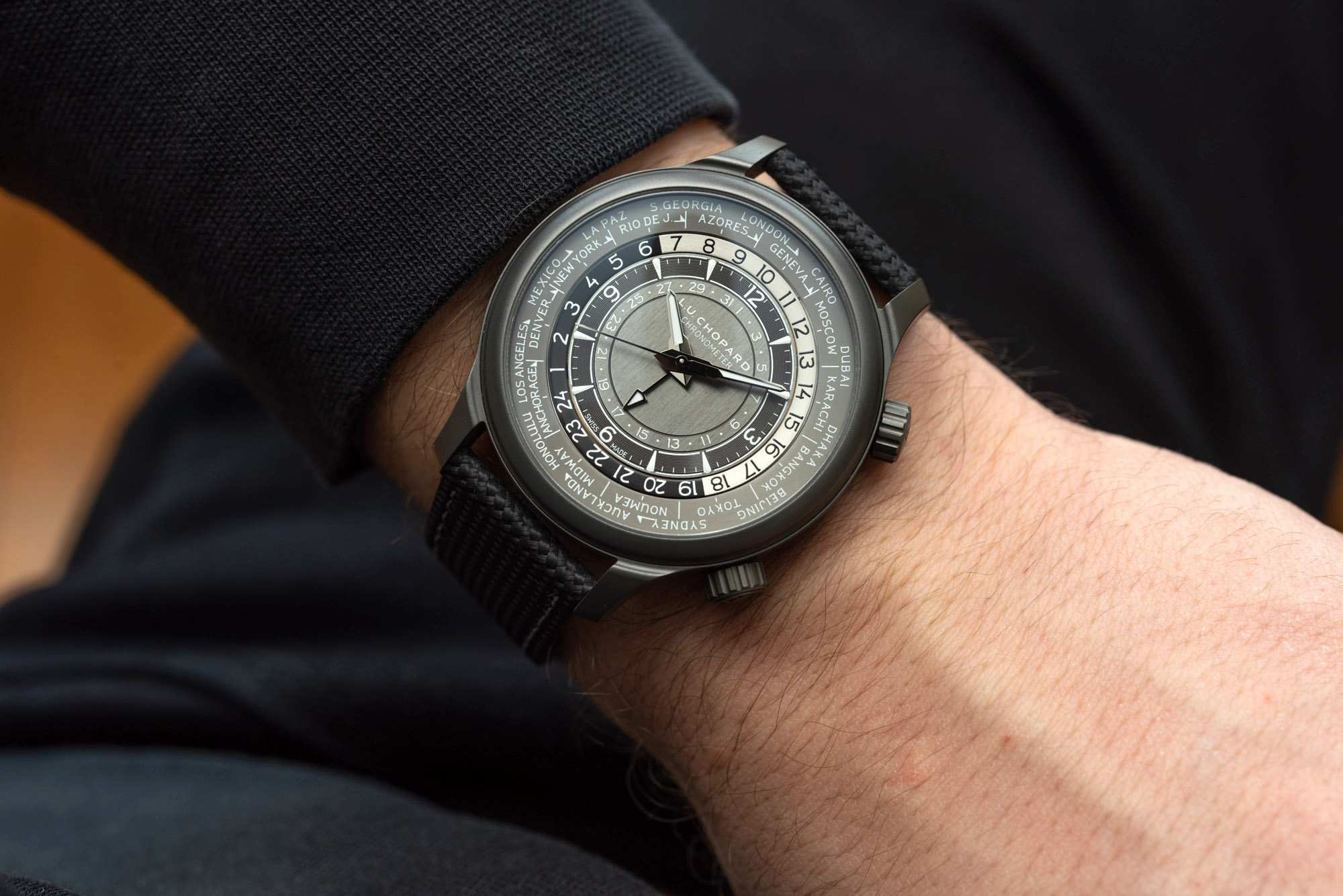
This one is a bit of a head-scratcher. Over the years, I have grown fond of Chopard, from its relatively more affordable “car lover’s watch” Mille Miglia collection through its competitive high-end L.U.C range of watches, all the way to its haute horlogerie creations, which have given stuffy historic names a run for their money in performance. And frankly, I quite like this Chopard L.U.C Time Traveler One Black in ceramized titanium — if not for the price, which seems a bit ambitious even when compared to in-house competition.
Worldtimers are great. This look, in which the city scale and a bi-color 24-hour scale surround an admirably petite central dial, is often associated with Patek Philippe, even though it is not a Patek design but one that Louis Cottier made possible with his movement in 1931. This elegant solution enticed Patek Philippe, Rolex, Vacheron Constantin, and countless others in the following decades to use this function to cater to the quickly globalizing world. Even the two-crown design (for easier use, as seen here) is believed to be his design from around 1950.
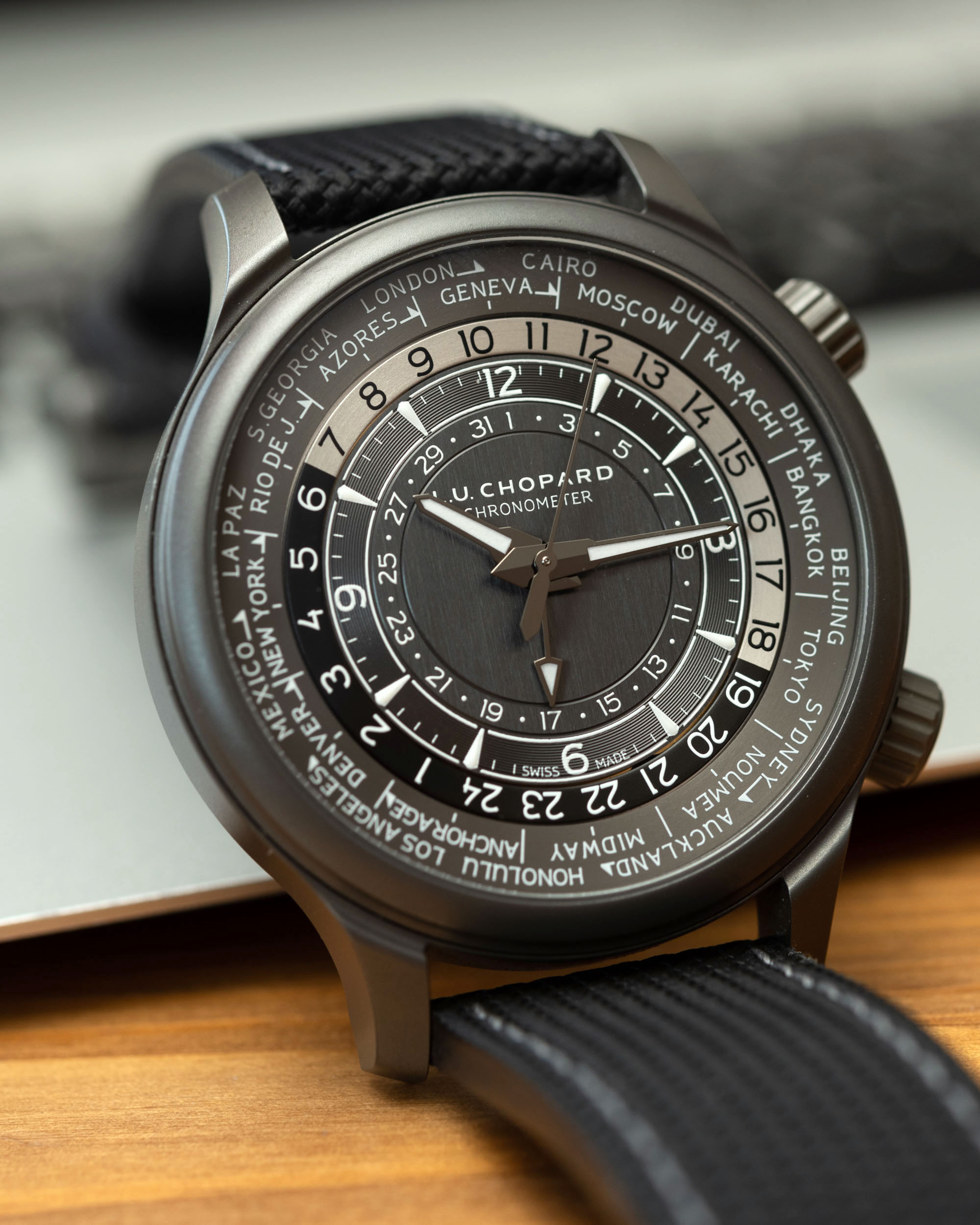
Still, much like a two- or three-subdial chronograph, the worldtimer dial maintains every bit of its appeal despite having been used by innumerable small and major watchmakers, alike, over the decades. As such, the Chopard L.U.C Time Traveler One Black is a crisp, monochromatic take on this recipe, made special by Chopard’s own little details — little details that have, over time, become beautifully rounded and exclusive traits found on Chopard and the highest-tier Chopard L.U.C watches.

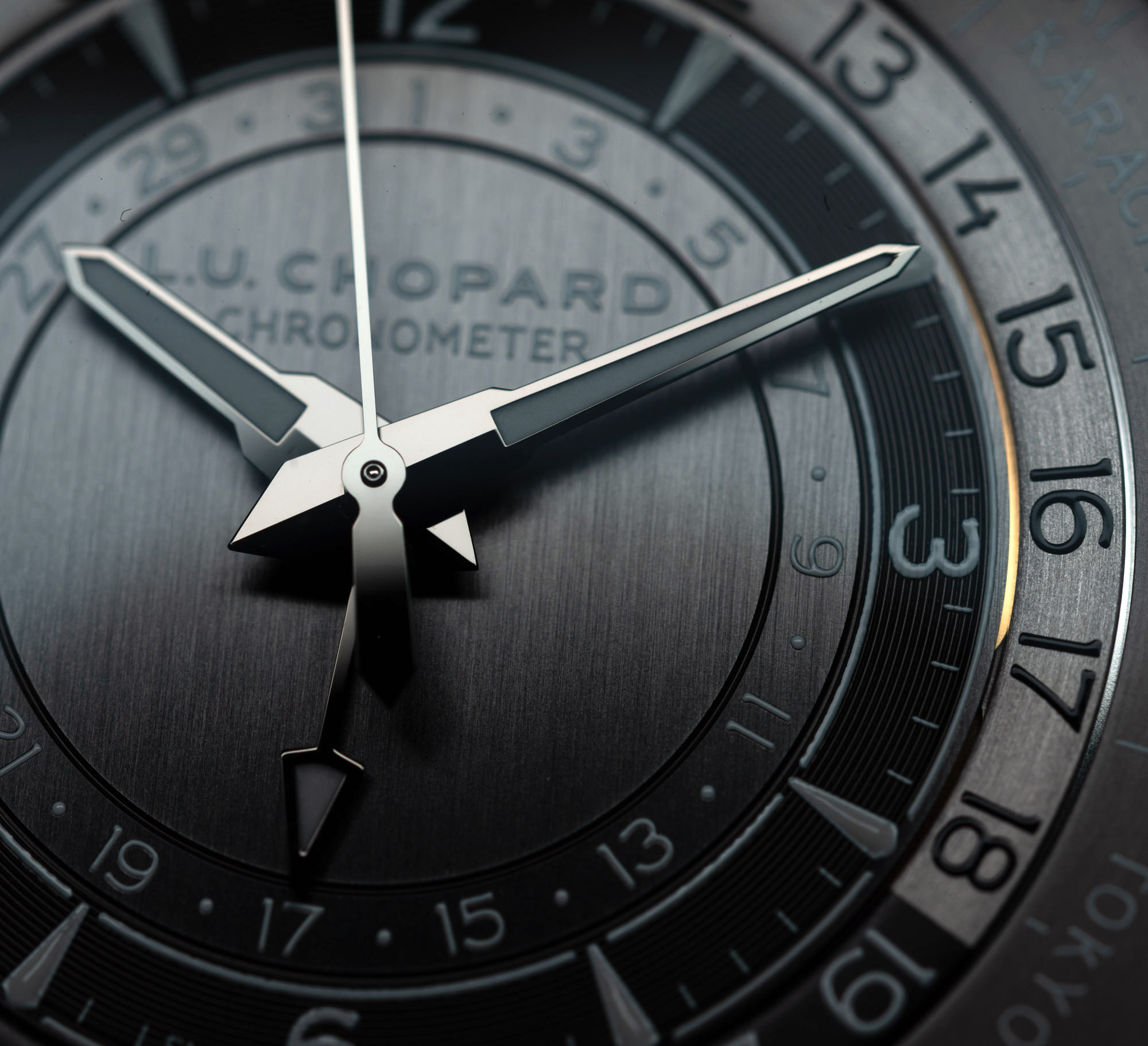
Strongpoints Of The Chopard L.U.C Time Traveler One Black
Let’s see what Chopard L.U.C gets right with impressive consistency these days, including on this “Time Traveler One.” First, the “Chrysler Building” hands — I’m not sure if anyone shares my sentiment on this name, but these fantastic hands never fail to remind me of the Chrysler Building, for some reason. A pretty design is useless without quality execution, and that’s especially true on luxury watches. The hands are polished on both sides with a prominent ridge along the center that entails two strongly angled planes and a triangular cross-section. This means that you almost always have at least one side of each hand reflecting and hence standing out against the dial, ensuring superb legibility — another thing Chopard gets right with an impressive hit rate between its designs.
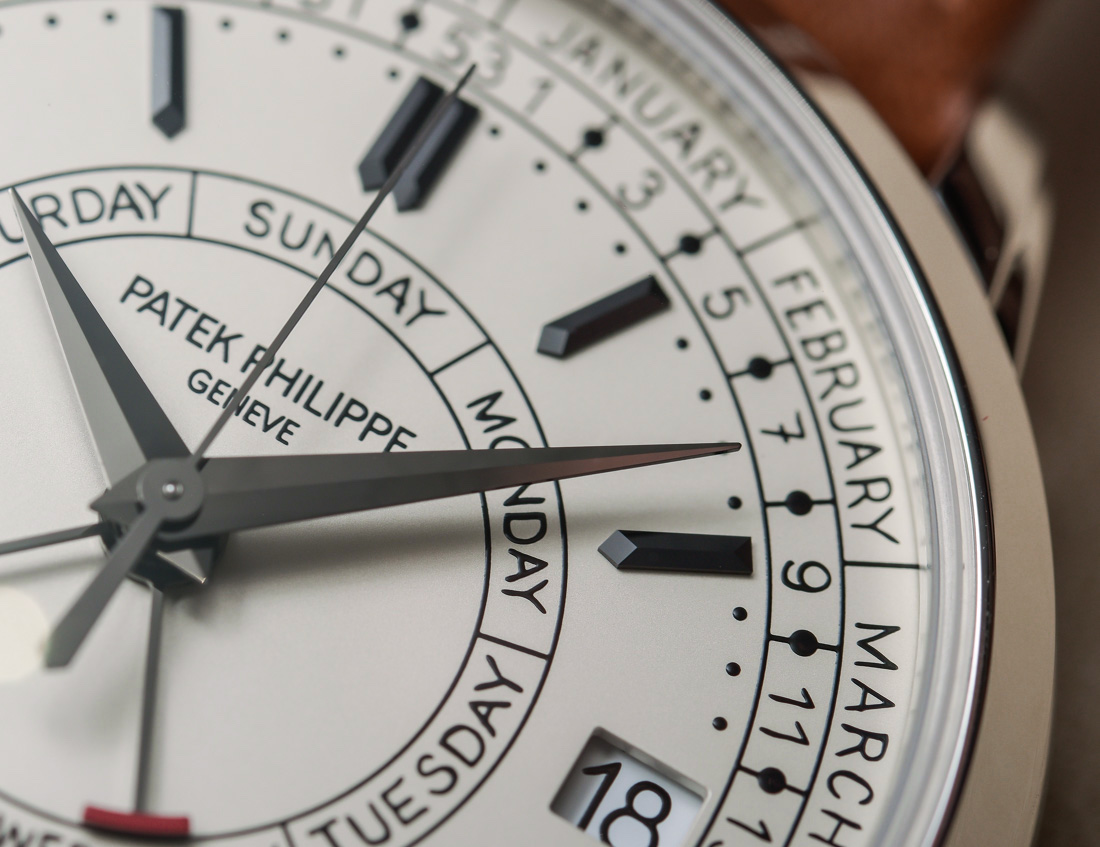
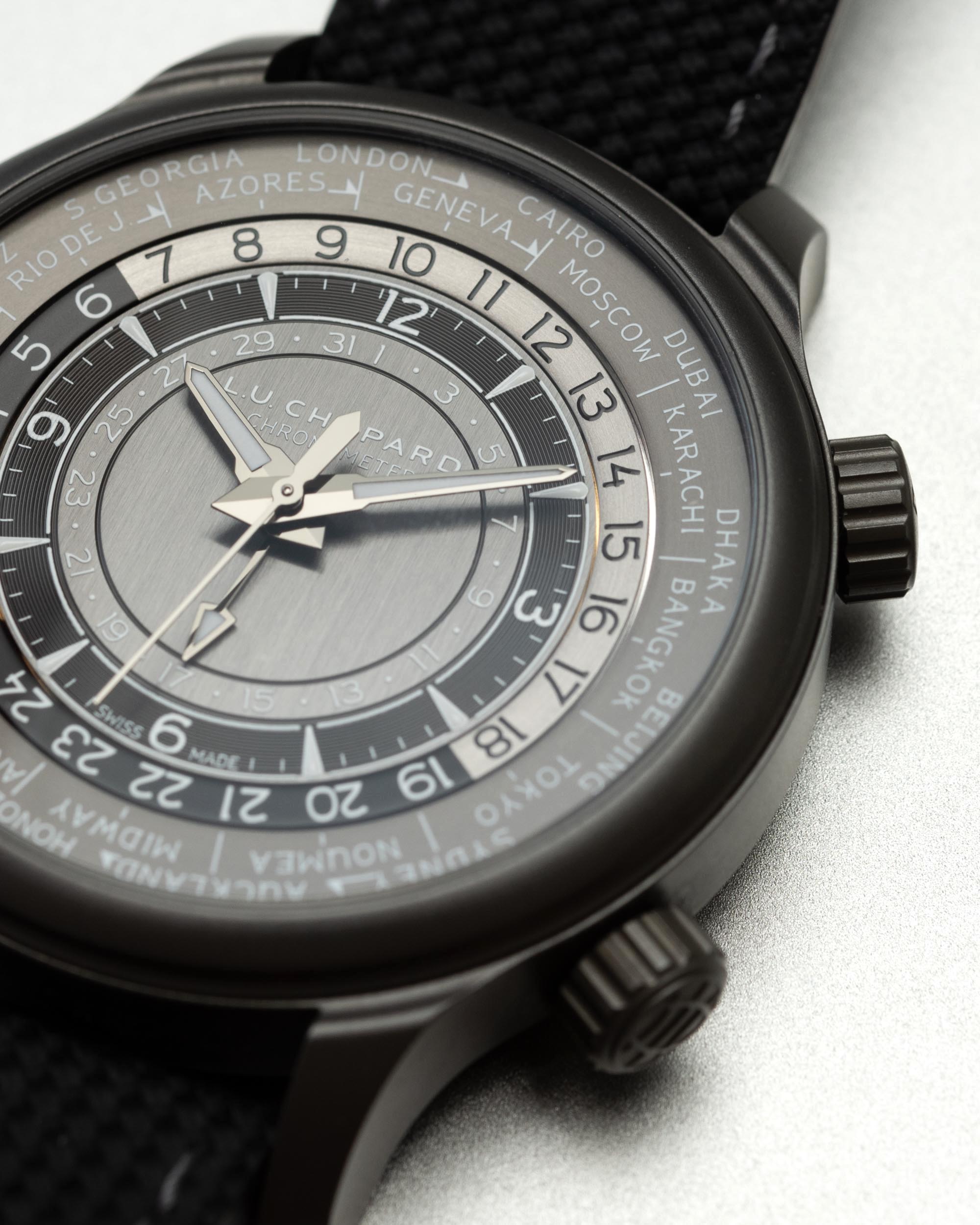
Second, a bespoke font style is used for every single script across the dial, down to the tiny SWISS MADE text flanking the 6 o’clock hour marker. The 24-hour scale, the city names, and the company logo are all consistent, and you don’t need to look too hard before you find similarly expensive watches that fail to apply a novel font so evenly. Typography is hugely underrated in watch design, in general, but that’s for another discussion. The approach reminds me of the Patek Philippe 5212A-001 (hands-on here), although I found that to be a bit of a try-hard and cutesy. The Chopard, to my eyes, is more mature in a pleasant way, like the handwriting of a 50-something architect versus an adept eight-year-old.
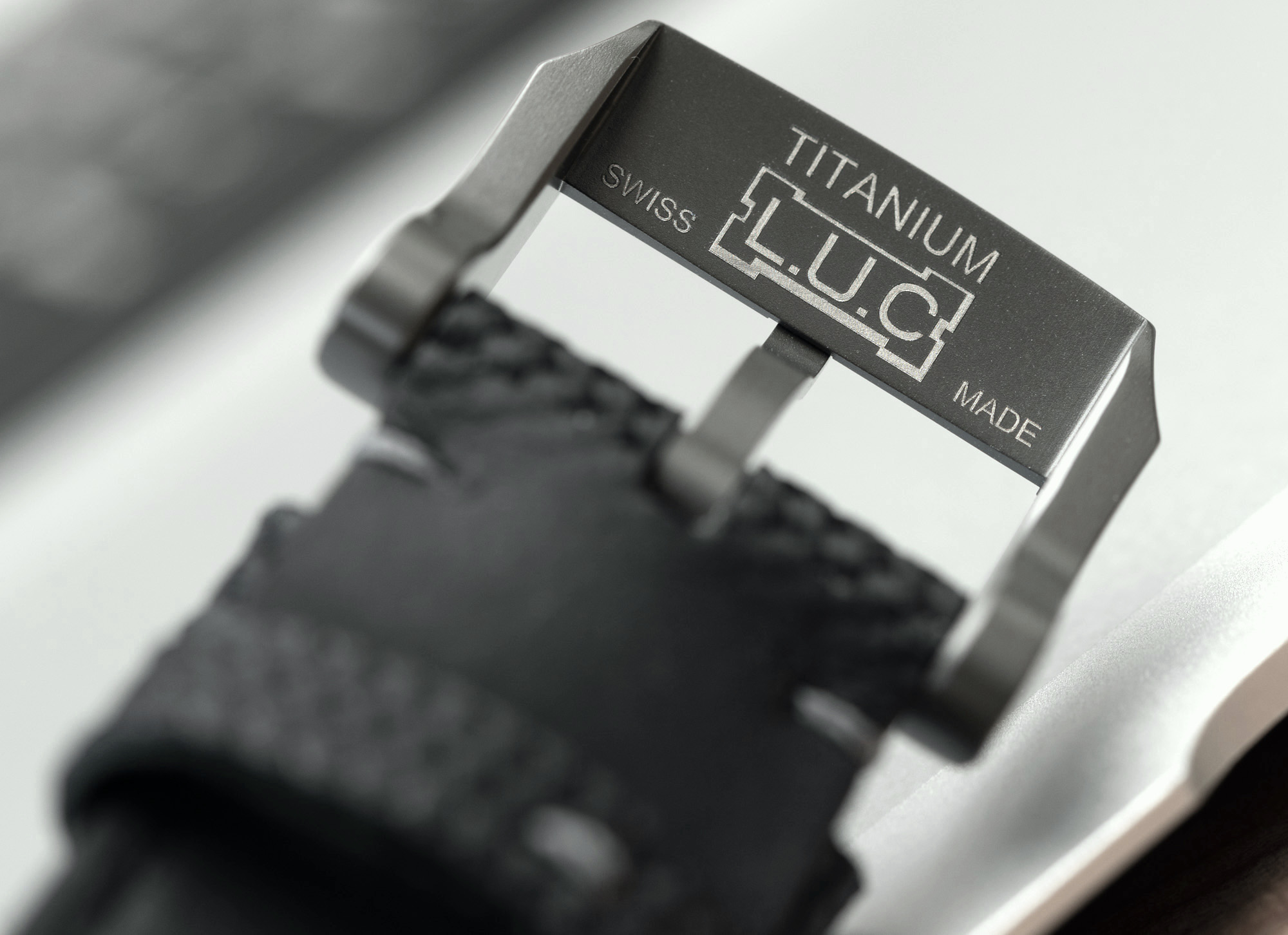
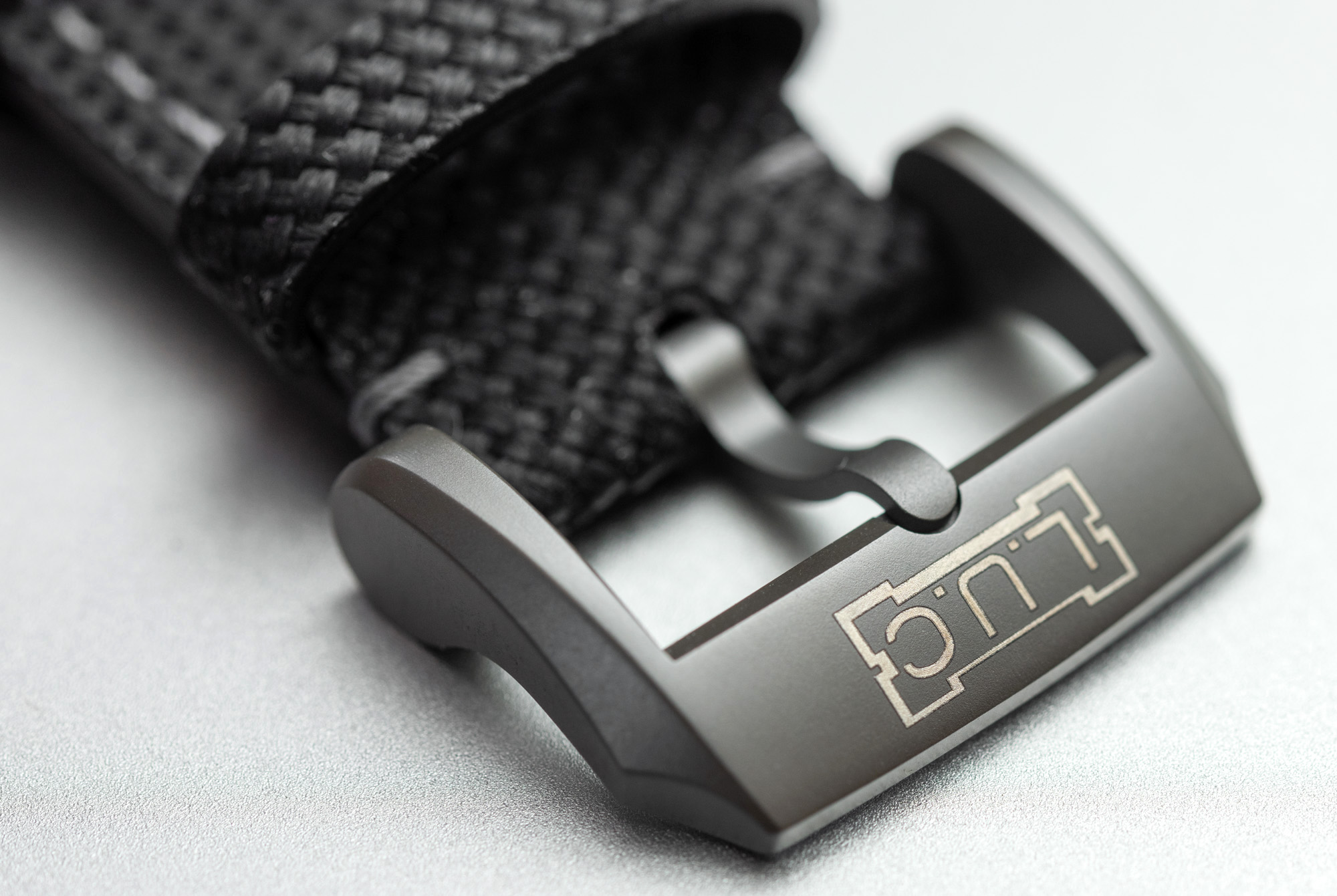
Third, the overall quality of execution and attention to detail (with a caveat soon to be discussed), down to the pin buckle and its beveled edge and laser-etched markings, in titanium, to match the case. Again, if a detailed and neat buckle was a given at this price point, we wouldn’t highlight it — but no price range is a guarantee for such nuances to match the case and dial (I’m looking at you and your shiny belt buckles, Panerai). The sapphire crystal front is in the top 1% of crystals I have ever witnessed or photographed on any watch. It’s so clear I found myself pressing my finger against it to see if it’s still there – dozens of times it happened that I truly didn’t want to believe there was a crystal still in place in front of that dial. Well done.
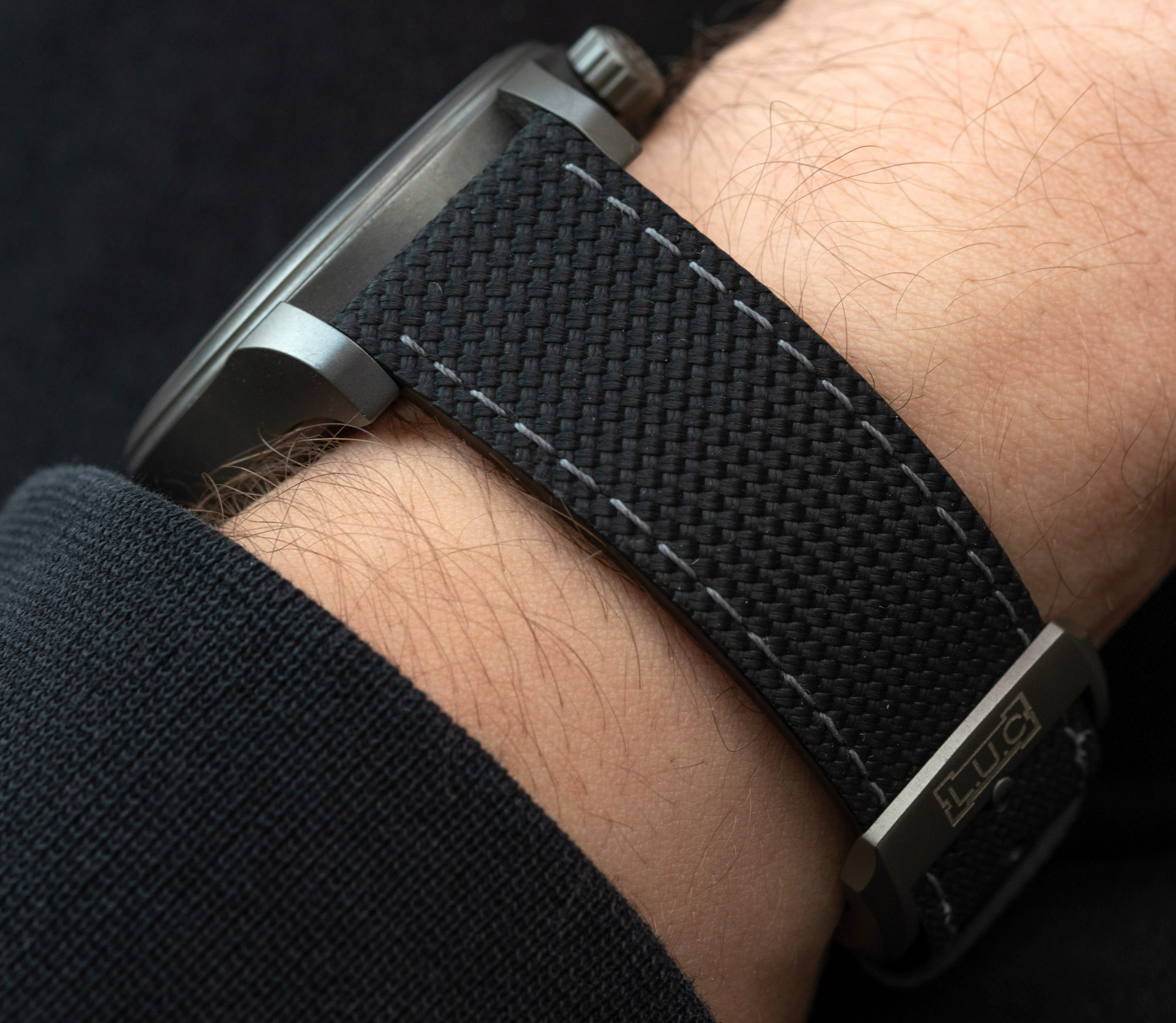
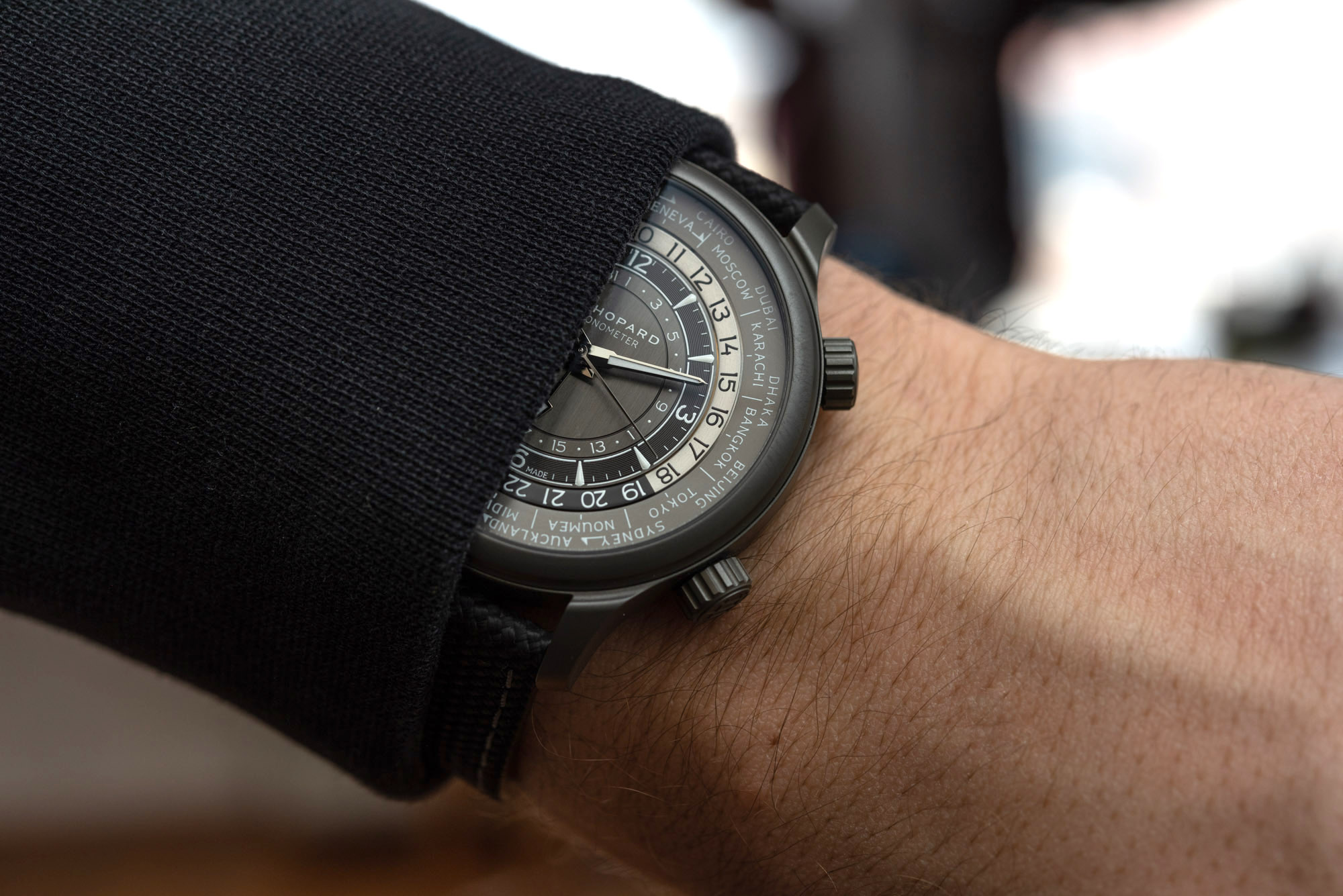
Fourth, wearability is great, thanks to the 12.09mm total case thickness and light weight of the titanium case and pin buckle (no thick folding clasp to dig into the wrist). The strap could be a bit more flexible and its edges a little less sharp. Fifth, overall functionality and tactility are great, courtesy of the Chopard L.U.C 01.05-L in-house movement. Rotating the city disc comes with a pleasant click for every new setting, so nice and easy that I often found myself spinning the disc a full 360° just to feel that luxurious tactility (yes, that). Power reserve is 60 hours, replenished by a quietly operating, full-size rotor matched to a modern and stable 4 Hertz operating frequency. Decorations are decent, although I’m far from being a fan of the “smoked” dark gray tinted exhibition caseback. Maybe a vignette effect could be fun, but this full-screen tease where I can barely see anything even in direct sunlight is more frustrating than amazing. Oh, and if you want to boast, with the Chopard L.U.C Time Traveler One Black watch you are getting a 291-part movement and 39 jewels — quite a high component count hinting at a rather complex movement to drive the hours, minutes, seconds, date and 24-hour display.
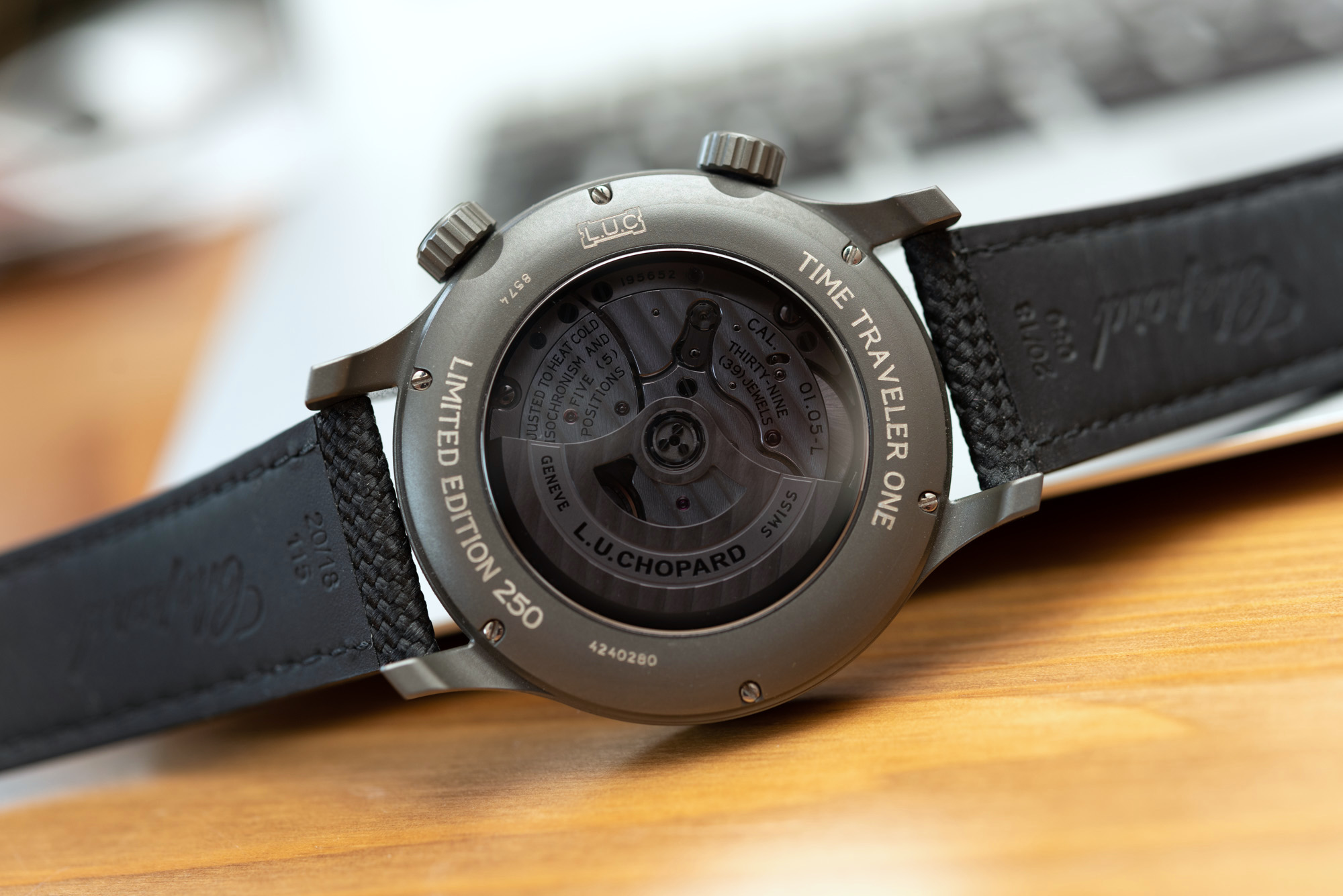
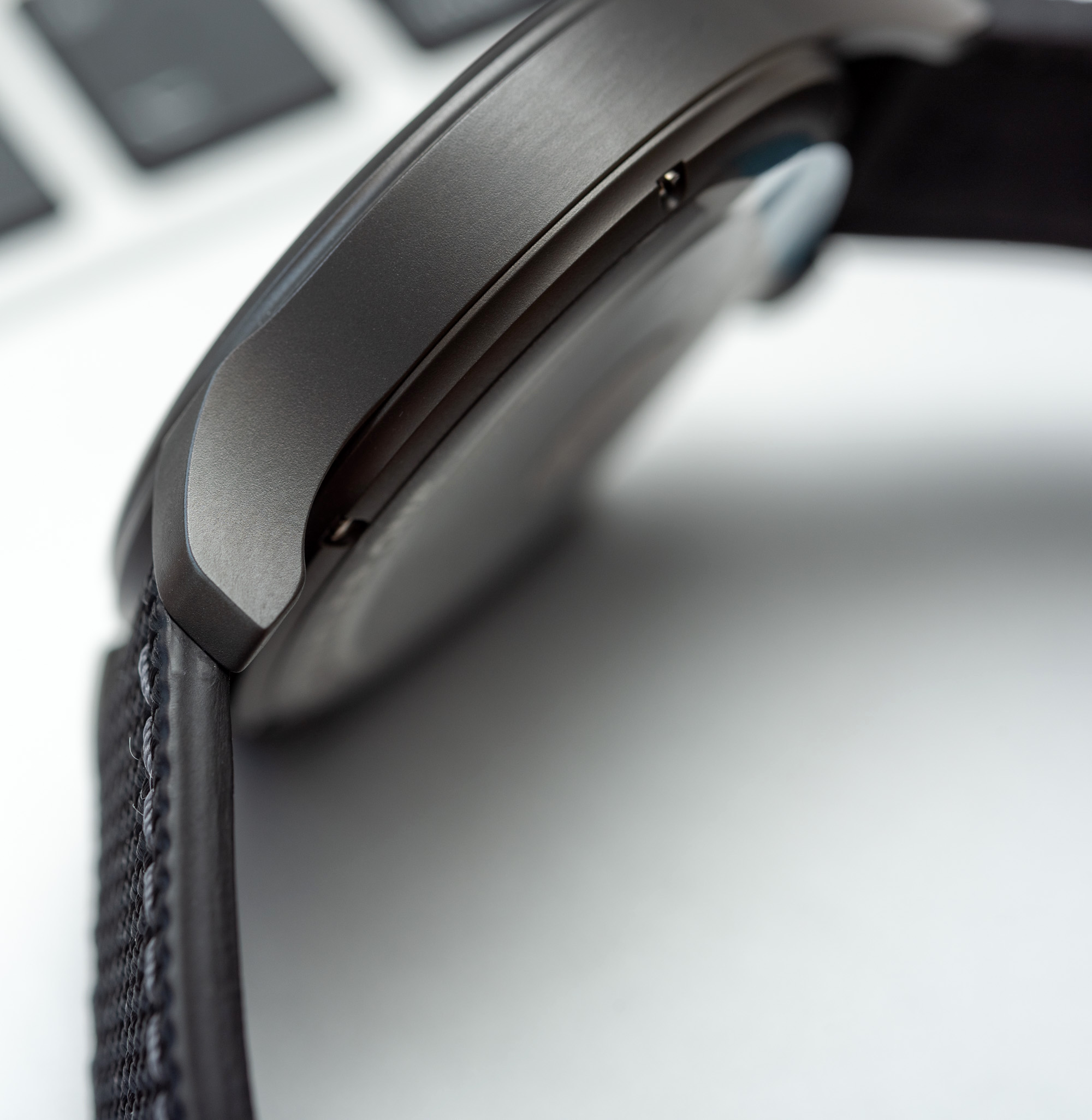
And Now The Cons Of The Chopard L.U.C Time Traveler One Black
I have already mentioned that the strap, especially close to the case, could use a little extra flexibility and that its edges could be a bit softer for enhanced wearing comfort. The titanium case that I have praised for its low weight and comfort could, and, I think at this price point, should be more elaborately designed. Its blocky lugs and universal surface treatment make for an aesthetic just too basic for my taste. Arguably, it directs attention to the beautifully crafted dial and hands — truly outstanding — but I just couldn’t help but wish for a little more from those lugs.
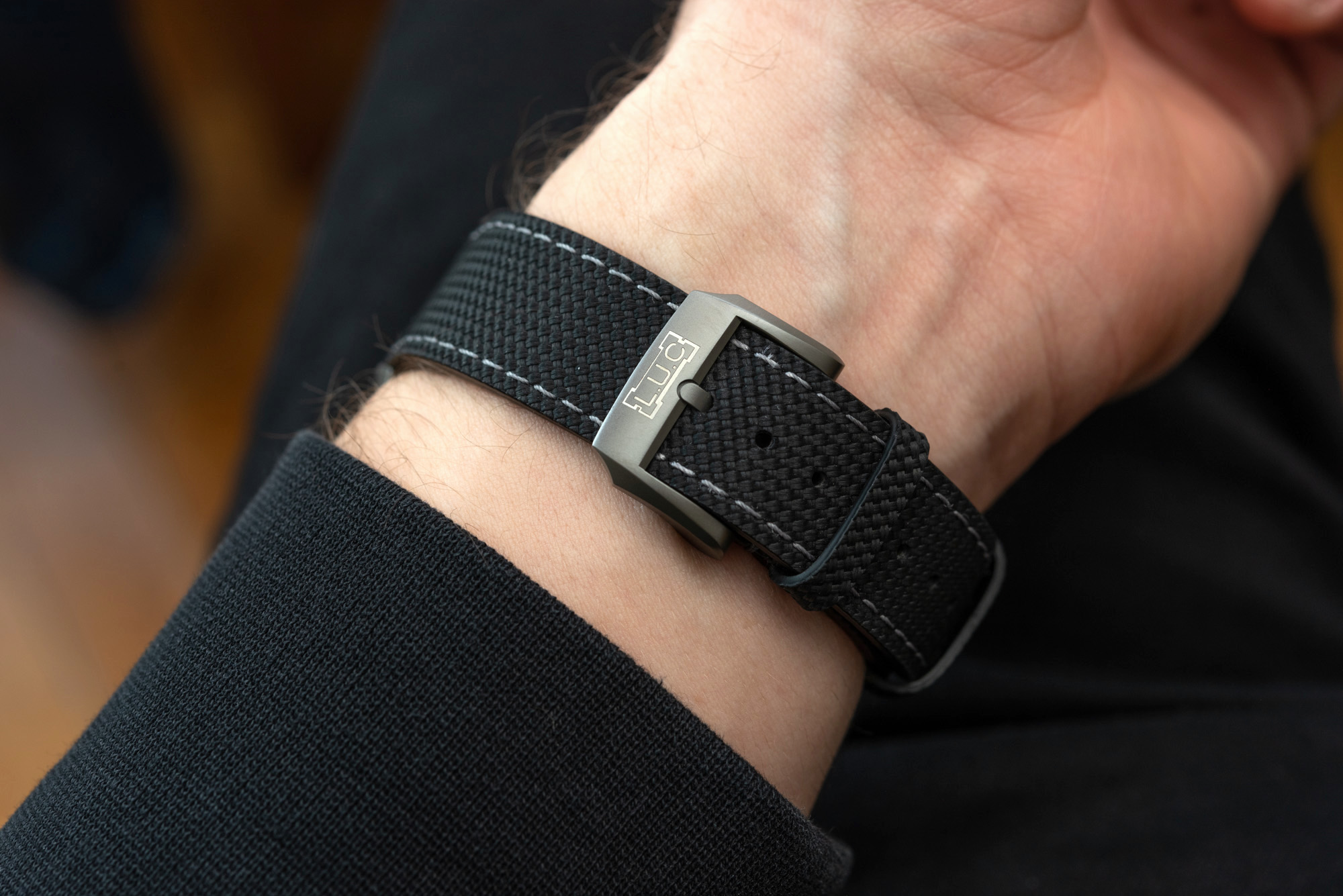
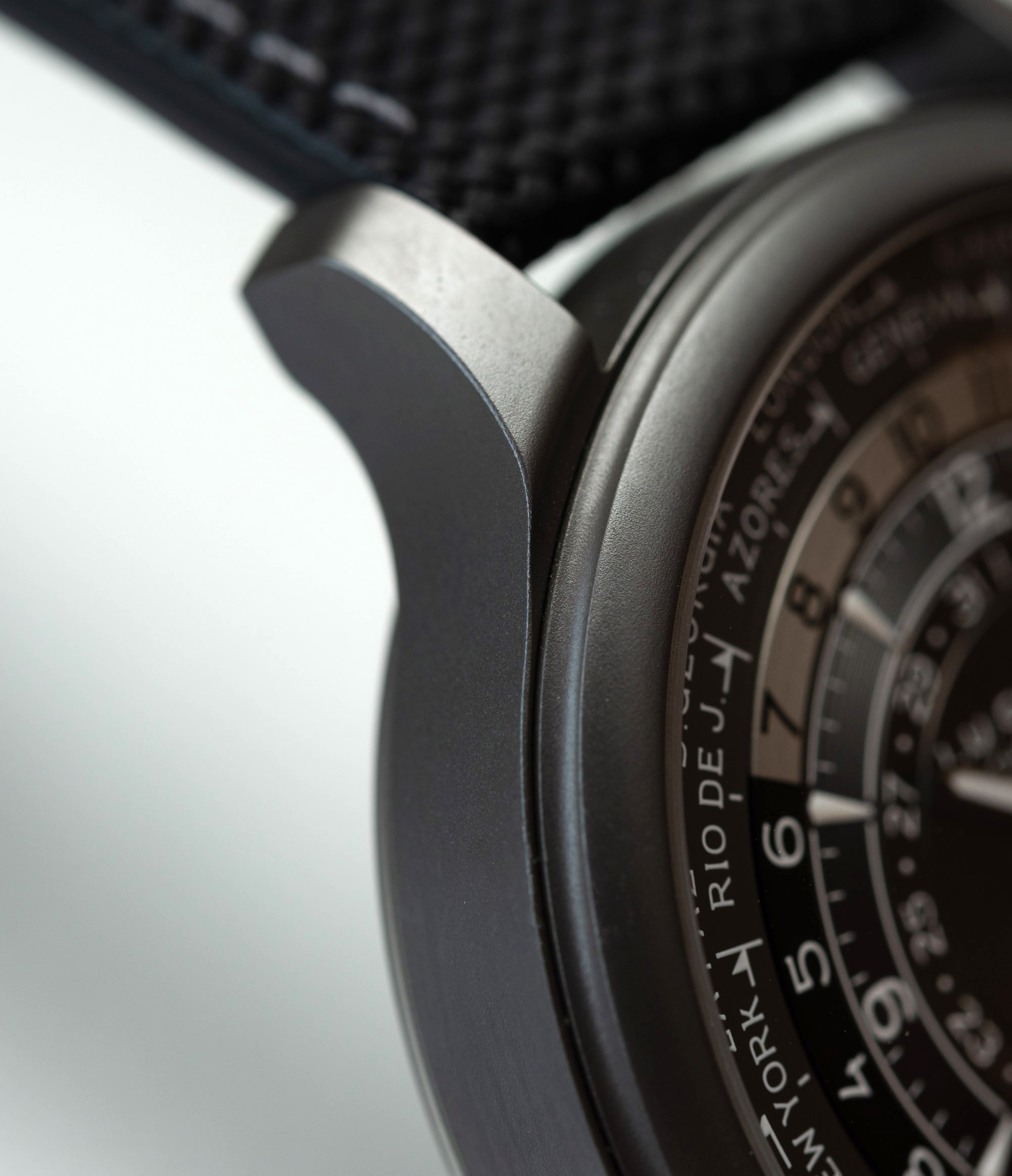
The surface is “ceramized,” which is supposedly great for durability — and, indeed, the Chopard L.U.C Time Traveler One Black showed no wear after two weeks of continuous wear, which is more than enough for regular titanium watches to get micro-scratches and small dings, in my experience. In a way — and I’ll stop banging on about this — the buckle gives the case a run for its money with those wide, beveled edges on either side. Something like that might have been possible with the lugs while still allowing for the “ceramisation” to be applied. That said, I’m sure some will find the blocky case a plus — an arguably masculine design that, again, directs focus on the dial and, in truth, goes rather well with the monochrome theme.
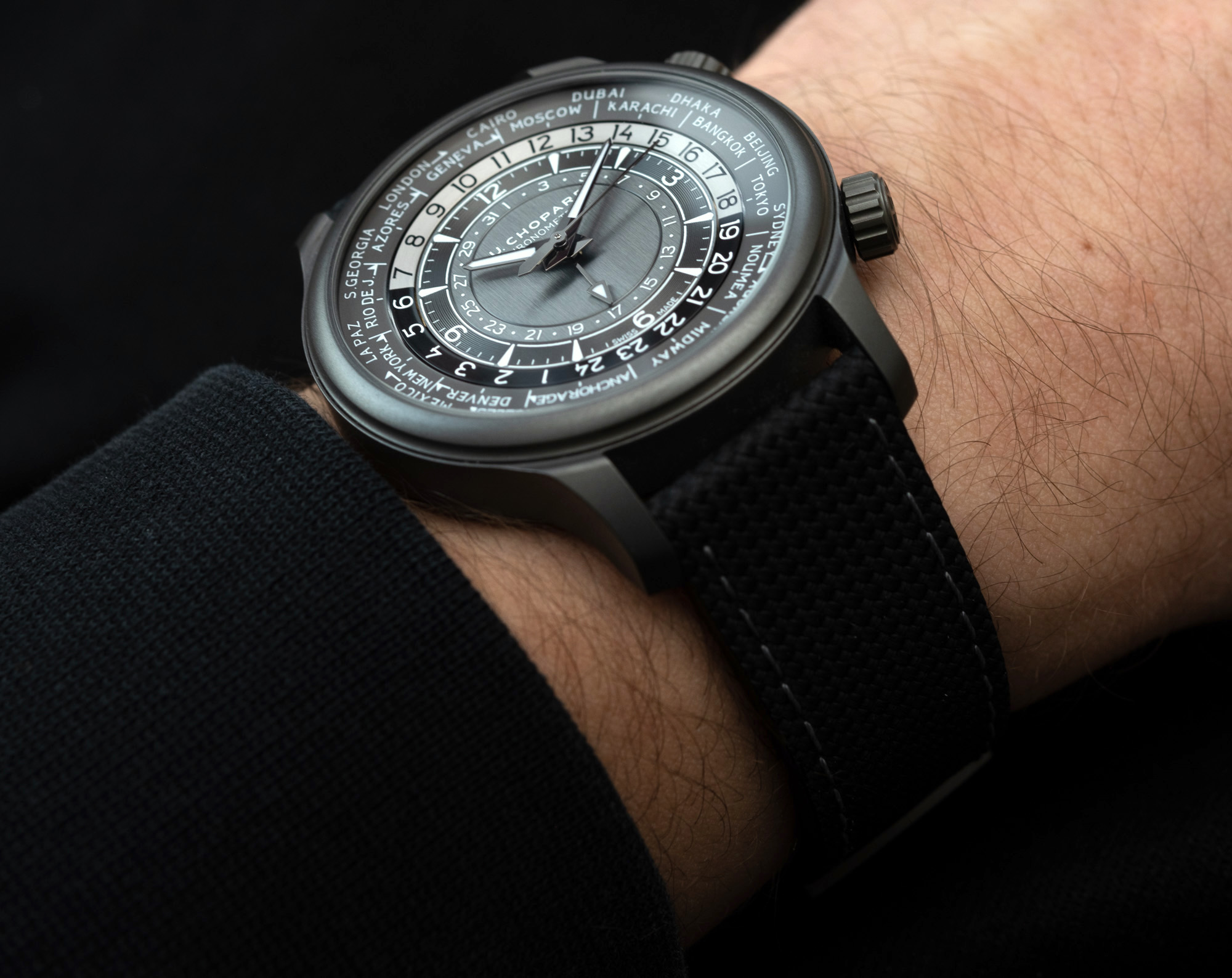
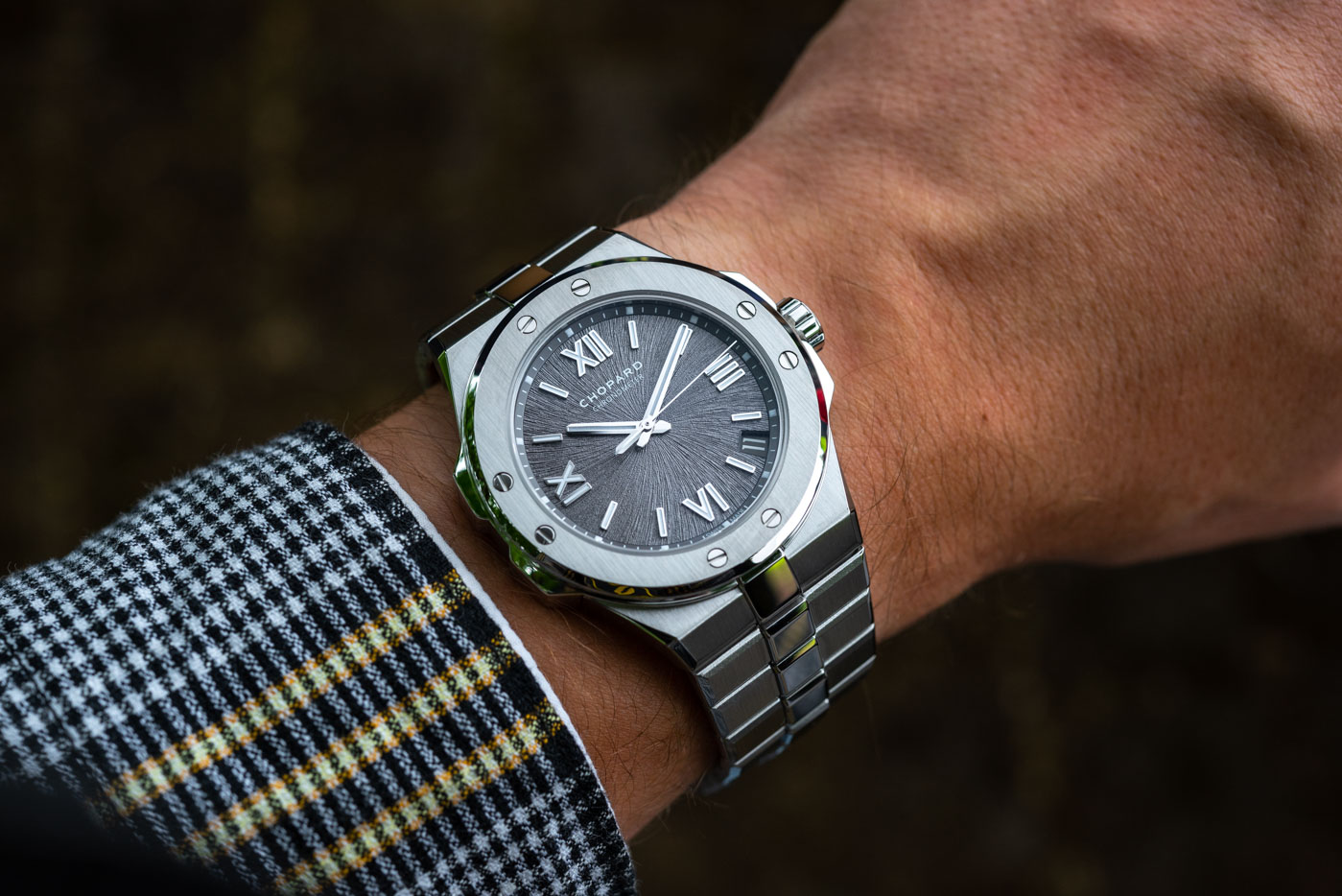
A general sensation associated with worldtimer watches, I presume, is that you get “a lot of watch” because of the perceived visual and mechanical complexity. And yet, I feel like Chopard offers strong in-house competition, value-wise, to the L.U.C Time Traveler One Black in the form of the Alpine Eagle, which is “even more watch.” Priced at $13,100 (which is a considerable $2,400 less), the Alpine Eagle offers the most spectacular case and bracelet material in its segment (and well above) with incredibly white Lucent Steel A223. The case, bezel, and bracelet are all executed to a level that literally outshines the Time Traveler One, admittedly sacrificing the low-key stealthy monochrome look in favor of, again, the nicest habillage (case and bracelet) in this segment. And the Eagle-eye dial is pretty neat, too, plus you get a comparable caseback aesthetic (sans Côtes de Genève) as the Time Traveler uses the same .01 caliber as its base. Whichever way I look at it, the Alpine Eagle looks like a watch easily 50% more expensive than the Time Traveler One Black. Let me know below if you agree.
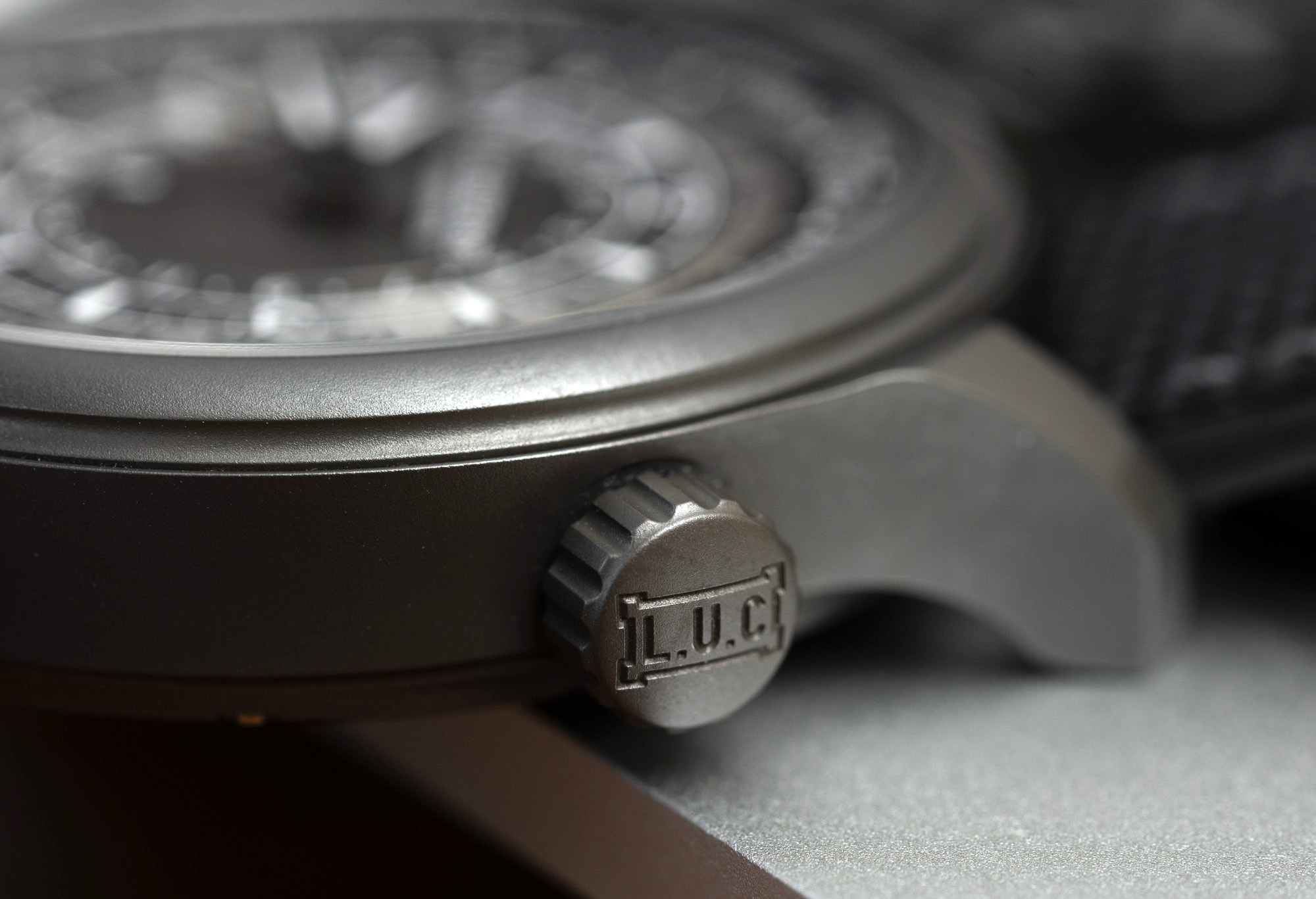
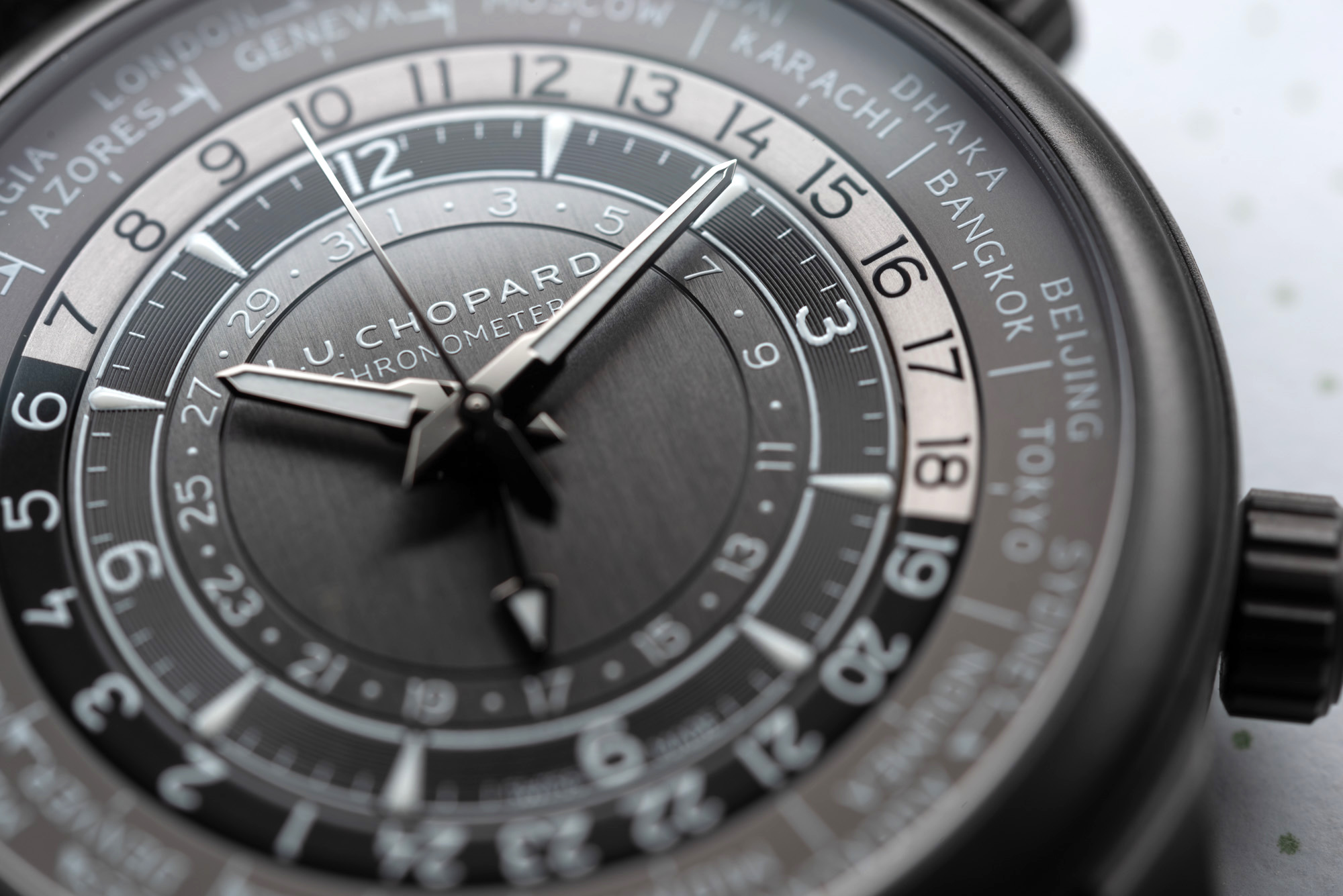
In essence, the Chopard L.U.C Time Traveler One Black is a superb-looking watch that can be a great daily for someone — a watch that you buy and wear for many years to come. The movement, around for some two decades now, the “ceramized” titanium case, the all-encompassing feel of solid quality, and the ageless monochrome design ensure that the Time Traveler One will age gracefully, and that’s not something that can be said about the majority of today’s luxury watches. However, because the Chopard L.U.C Time Traveler One Black is priced at $15,500, it is subject to strong competition, even from within the family, as the Alpine Eagle offers a more intricate and spectacular package… if that’s what you’re after. You can learn more on the brand’s website.

